I was first exposed to cybernetics and systems theory as a teenager in the
late 1960s, when I read about them in the Whole Earth Catalog, in
the first section, entitled "Understanding Whole Systems."
In 1975, at Kresge College, University of California at Santa Cruz, I pursued
an individual major in "Whole Systems," sponsored by Gregory Bateson, and
taught a one quarter student-directed seminar in "Understanding Whole Systems."
Fifteen years later I was showing the course notes for this class to my teacher
friend Jodi Reed, and she asked me how I would do it differently if I did it
over. In response I wrote "A Curriculum for Cybernetics and Systems Theory"
in 1990 and posted it on the web, with updates in 2002 and 2012. (It wasn't
exactly a curriculum, but more of a meandering set of books reviews in the
style of the Whole Earth Catalog.)
Since then there have been some game-changing developments in these fields,
especially how they are taught, and I have also had some time to think about
the big picture.
I came to realize that ultimately cybernetics and systems theory represent a
trendy repackaging of applied mathematics. Much of our
traditional math curriculum is based more on pure mathematics,
especially after grade 12, and the problems of training a new generation of
mathematicians. Problems are often chosen based on elegance, and on the
opportunities to expand the reach of math; proofs are emphasized, since if
students are to ultimatly create new math they must use proofs. But the
needs of applied math are different; problems are often chosen because of
societal needs, even if the exact solutions are provably impossible and
approximations are inelegant.
We need to prepare students for a world in which these trends continue.
Certainly it is possible that our technological civilization may collapse;
every other one has. But in that case we will put our problems with math
education on the back burner for at least a few decades, and have to
concentrate on how to eat, which would mean learning to use a 12,000-year-old
invention called "the plow." This is vividly illustrated in the first
episode ("The Trigger Effect") of James Burke's TV series "Connections"
(1978), at about 5:15 - 30:00.
But assuming that doesn't happen, we need to stop teaching our students as if
the computing resources were unavailable or prohibitively expensive, and
instead prepare them for real life in the modern era.
One nation that has done this is Estonia. Regaining independence as a
democratic republic in 1991, after life in the Soviet empire and its
centralized control, educators there have become independent thinkers and
adopted a new curriculum based on the reality of computing in the 21st Century.
Conrad Wolfram, brother of Mathematica-founder Stephen Wolfram, has created a
new curriculum called Computer Based Math (CBM), which is one of the
innovations Estonia has adopted.
I don't know many details, but the thinking here seems to run the same way as mine.
Education for professional mathematicians almost always proceeds from abstract
to concrete:
I follow that approach in this curriculum.
For simplicity I assume that each course is one hour a day, five days a week.
I also assume that the students are, in parallel, taking the standard math
curriculum. When I went to grade school in California 50 years ago that
sequence was, in middle school (grades 7-8) two years of pre-algebra, and in
high school (grades 9-12) one year each of algebra I, geometry, algebra II and
pre-calculus. Since then statistics has been added. Typically a college
student on a pre-med track will take one year of calculus as their last math
course. My course plans assume they have taken these classes in this sequence.
I recommend the books I've read. I have vetted them enough to approve them,
with whatever caveats I've put in the notes. I mostly selected the books I
haven't read by "judging a book by its cover." Think of these books as
standing in for whatever titles might deliver on their apparent promises.
I will hopefully reduce this list as I revise this document.
So here, then, is my latest (work-in-progress) curriculum, designed to be
terse and focused on the problem at hand.
| | | |
| Middle School (grades 7-8) | |
| | I think to many students the math curriculum looks like a
long, steep hiking trail up a mountain to a peak permanently obscured by
clouds. In my view this impression does them a disservice. They need to know
where the trail goes, and also that it branches and isn't just a linear
sequence. My goal in the middle school classes is not only to teach them
some things they will need — both in life and in later classes in this
list — but also to give them an experience in learning math they can
fully understand. The courses in probability, symbolic logic (Boolean
algebra), game theory and network theory (graph theory) should all be
structured so that the material can be verified by inspection or simple
calculations. This is not to say that they will be expected to learn
everything about these subjects, which can be very extensive and subtle, but
that the knowledge presented should be as complete as possible for the
classes of problems to be solved, letting them experience being able to
completely "wrap their heads around" what is presented. | |
| | | |
|
probability (one semester)
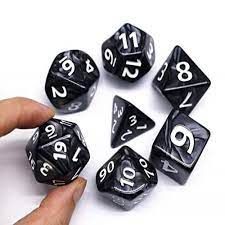 | |
Kids seem to love probability theory because they can use it in
games, from Blackjack to Dungeons and Dragons. Be wary of parents objecting
if you teach them casino games — maybe use permission slips — but
I have found that an understanding of the subject discourages gambling. A
goal of this class would be to learn to figure odds using Markov trees and
combinatorial functions. | |
|
1. |
| Book Title | Mathematics: A Human Endeavor | | Author | Jacobs, Harold R. |
| Date | 1970 |
| Grades | 7-10 |
| Keywords | SYMBOLIC MATH
PROBABILITY THEORY |
|
| Notes | This
award wining text covers more than is needed in this class, and also seems
very good at helping get kids interested in math. |
|
2.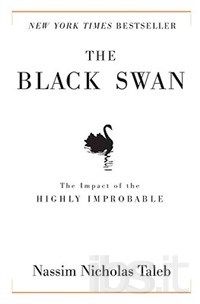 |
| Book Title | The Black Swan | | Author | Taleb, Nassim Nicholas |
| Date | 2007 |
| Grades | 7-16 |
| Keywords | PROBABILITY THEORY |
|
| Notes |
Taleb's writing helps balance out the false feeling that probability theory can
be used everywhere; he points out the difficulty of figuring odds for rare
events. |
|
3.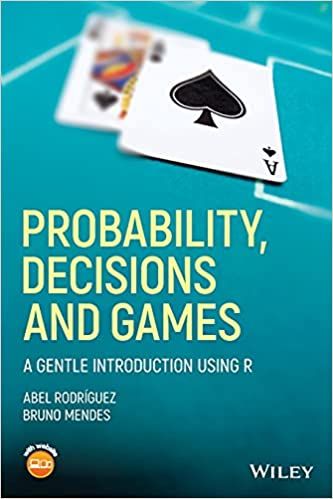 |
| Book Title | Probability, Decisions and Games: A Gentle Introduction using R | | Author | Rodríguez & Mendes |
| Date | 2018 |
| Grades | 7-16 |
| Keywords | PROBABILITY THEORY |
|
| Notes | This
looks like a fun way to have the students do numerical experiments with
probability. [I have not read this book.] |
|
4. |
| Software Title | R | | From | The R Project |
| Grades | 9-20 |
| Keywords | STATISTICS, PROBABILITY |
|
| Notes | This
is the software you'll need to use the above book. Available from the R
Project web site.
|
|
| | | |
|
symbolic logic (Boolean algebra) (one semester)
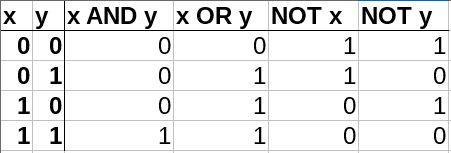 | |
A nice thing about symbolic logic is that in most cases you can
come to definitive answers just by looking at all possible combinations, since
each variable can only have one of two values (1 or 0, True or False). I would
caution to avoid getting "wrapped around the axle" on the meaning of "IF A THEN
B" which has more meanings in English than in symbolic logic, especially when
time is involved. I prefer "A IMPLIES B" or "A -> B" instead. | |
|
5.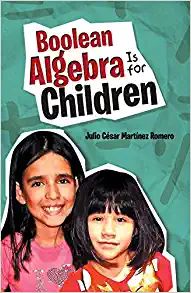 |
| Book Title | Boolean Algebra Is for Children | | Author | Romero, Julio César Martínez |
| Date | 2017 |
| Grades | 7-16 |
| Keywords | SYMBOLIC MATH
BOOLEAN ALGEBRA |
|
| Notes | [I have not read this book.] |
|
6. |
| Book Title | The Lady or the Tiger? & Other Logic Puzzles | | Author | Smullyan, Raymond |
| Date | 1982 |
| Grades | 7-16 |
| Keywords | LOGIC PUZZLES |
|
| Notes | Kids
often love puzzles and games. One way to use this book is to present a puzzle
a day to solve and discuss. Also give students extra credit for bringing in
interesting logic puzzles and games. |
|
7.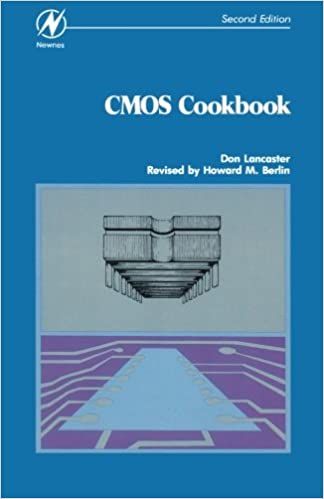 |
| Book Title | The CMOS Cookbook | | Author | Lancaster, Don |
| Date | 1997 |
| Grades | 7-16 |
| Keywords | DIGITAL LOGIC
BOOLEAN ALGEBRA |
|
| Notes | Get a
breadboard (reconfigurable circuit board) with power supply and some logic
chips (5 volt CMOS), along with some switches for input and LEDs for output,
and have the kids play around with them. It makes this stuff far more
concrete. |
|
8.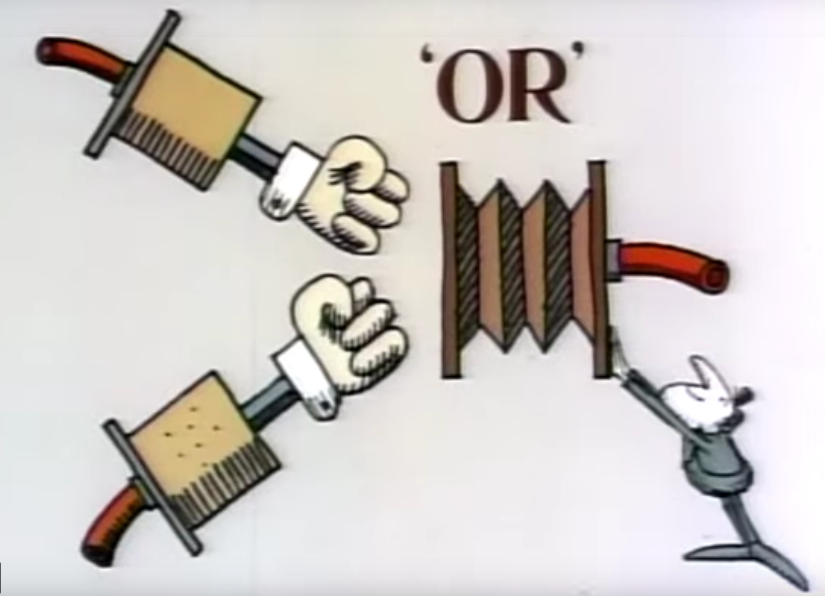 |
| Movie Title | A Computer Glossary |
| Directed By | Charles and Ray Eames |
| Date | 1968 |
| Grades | 13-16 |
| Keywords | LOGIC CIRCUITS |
|
| Notes | This
cute video was produced by the Eames for an IBM exhibit over fifty years ago,
dealing with what we now call mainframe computers, many technical generations
ago, and yet it is still useful for its cartoon illustrations of logic gates.
Show it at the first class meeting.
|
|
| | | |
|
game theory (one semester)
 | |
It's easy to get kids interested in a class called "game theory,"
for obvious reasons. The goal of this class should be for them to be able to analyze two-person strategy games and to understand concepts like best strategy and Nash equilibrium. | |
|
9. |
| Book Title | Game Theory 101: The Complete Textbook | | Author | Spaniel, William |
| Date | 2011 |
| Grades | 13-16 |
| Keywords | GAME THEORY |
|
| Notes | [I have not read this book.] |
|
10.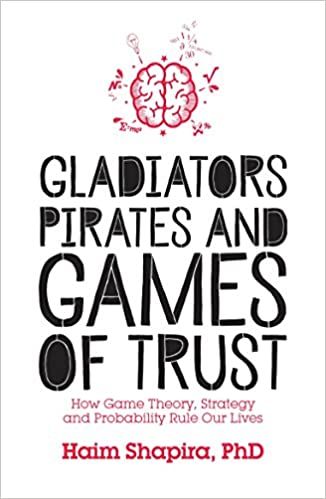 |
| Book Title | Gladiators, Pirates and Games of Trust: How Game Theory, Strategy and Probability Rule Our Lives | | Author | Shapira, Haim |
| Date | 2017 |
| Grades | 13-16 |
| Keywords | GAME THEORY |
|
| Notes | [I have not read this book.] |
|
11.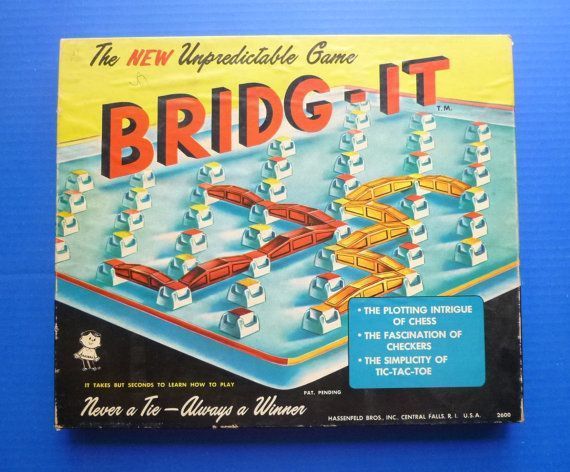 |
| Game | Bridge-It |
| Date | 1960 |
| Grades | 13-16 |
| Keywords | GAME THEORY |
|
| Notes | It
would be a bait-and-switch to offer middle schoolers a game theory class and
then not let them play games. I list Bridge-It here, a commercialized version
of the Shannon Switching Game created by Claude Shannon, inventor of the bit.
I don't think it's being made any more but you can find units on eBay. Other
games I'd suggest:
- The Game of Pure Strategy — also known as Goofspiel
- The Foxhole Game — taught at the Army War College; described
by Martin Gardner in "Mathematical Magic Show" (1965), chapter three.
- Hex aka John — played on a hexagonal grid,
co-invented by John Nash
- 4D Tic-Tac-Toe use 16 4x4 grids
- Nim
- Go
- Maelstrom — like chess but with pieces on every space at the start
- Nomic — a game in which players change the rules
Play tournaments, perhaps every Friday, and give extra credit for briging in
interesting games. They will soon learn that some games are hard to analyze
using classic game theory.
|
|
| | | |
|
network theory (graph theory) (one semester)
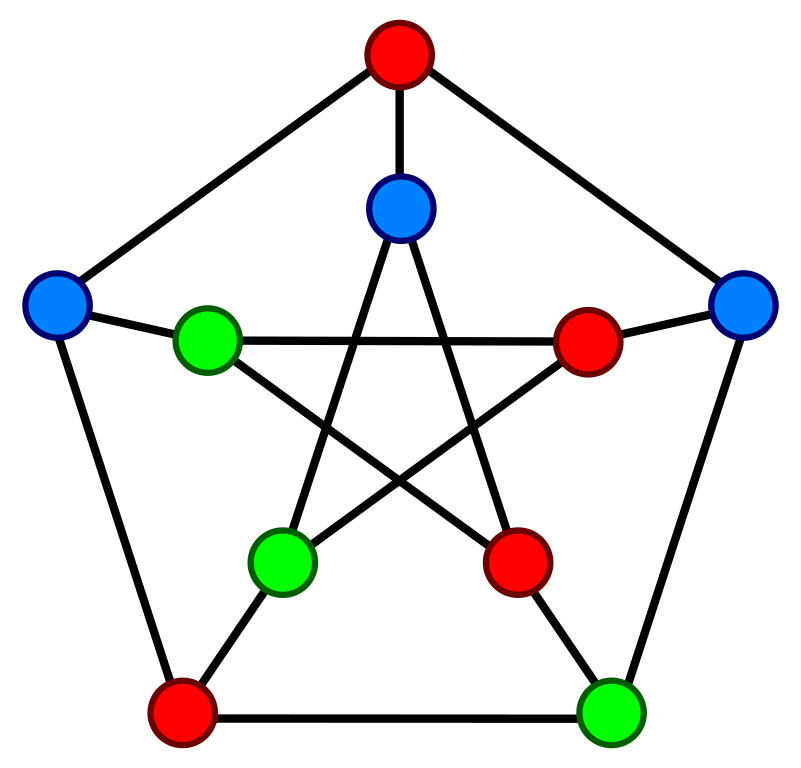 | |
|
I prefer to call this field "network theory" because the name "graph theory"
is so vague and misleading. Sometimes I call it dots connected with lines. It
is a new field; when I studied it in college there were no texts. I still
haven't found a great one. But there are some good videos out there.
The goal of this course should be to introduce the concepts (probably by using
Euler's famous Seven Bridges of Königsberg problem), the terminology
(including walks and trees) and to show the mapping of a graph onto a binary
matrix, along with the shortcuts this allows.
| |
|
12.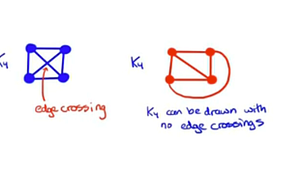 |
| Video Title | Graph Theory: 57. Planar Graphs | | Author | Sarada Herke |
| Date | 2015 |
| Grades | 7-20 |
| Keywords | GRAPH (NETWORK) THEORY PLANAR GRAPHS |
|
| Notes |
This whole series is pretty good by I especially like the episode on planar graphs.
|
|
13.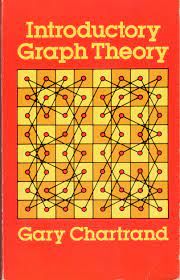 |
| Book Title | Introductory Graph Theory | | Author | Chartrand, Gary |
| Date | 1985 |
| Grades | 7-16 |
| Keywords | SYMBOLIC MATH
GRAPH (NETWORK) THEORY |
|
| Notes | This book will do OK, but it's a bit "mathy." It suffers from introducing symbols before examples. This can be fixed in lectures, by presenting examples first before each set of definitions. |
|
14.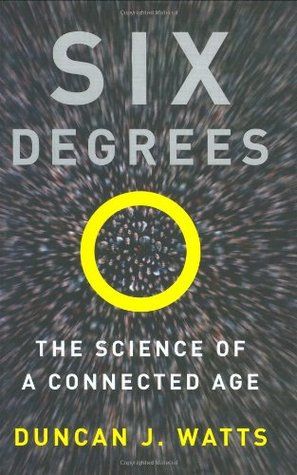 |
| Book Title | Six Degrees: The Science of a Connected Age | | Author | Watts, Duncan J. |
| Date | 2003 |
| Grades | 7-16 |
| Keywords | GRAPH (NETWORK) THEORY |
|
| Notes | This book details the ways graph theory is relevant to the age of internet and social media. |
|
15. |
| Book Title | Connected: The Surprising Power of Our Social Networks and How They Shape Our Lives — How Your Friends' Friends' Friends Affect Everything You Feel, Think, and Do | | Author | Christakis, Nicholas A. |
| Date | 2011 |
| Grades | 7-16 |
| Keywords | GRAPH (NETWORK) THEORY |
|
| Notes | This
book is more rigorous than "Six Degrees..." Christakis is at the forefront of social network research today, and explains it well. |
|
16.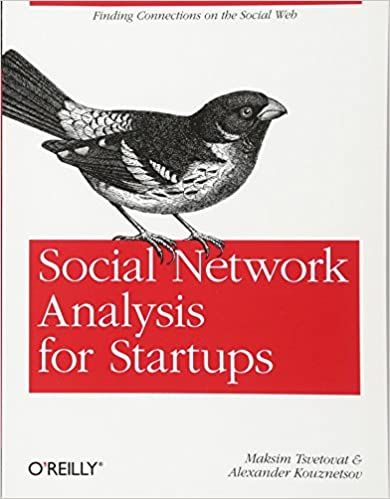 |
| Book Title | Social Network Analysis for Startups | | Author | Tsvetovat & Kouznetsov |
| Date | 2003 |
| Grades | 11-20 |
| Keywords | COMPUTER PROGRAMMING
GRAPH (NETWORK) THEORY |
|
| Notes | This book is really too advanced for this grade level, with the programming skills needed, but if you skip that stuff the concepts are incredibly useful, especially the "grey cardinal." If you have students who want to tackle the programming for extra credit, do encourage them. |
|
17. |
| Video Title | Why this puzzle is impossible | | Author | Grant Sanderson, 2Blue1Brown |
| Date | 2021 |
| Grades | 7-20 |
| Keywords | GRAPH (NETWORK) THEORY |
|
| Notes | Show this video after you have the students attempt the "three houses and three utilities" puzzle. Also expose the to other puzzles, like the six party guests in Ramsey Theory. Give extra credit for students bringing in other puzzles based on graph theory.
|
|
18.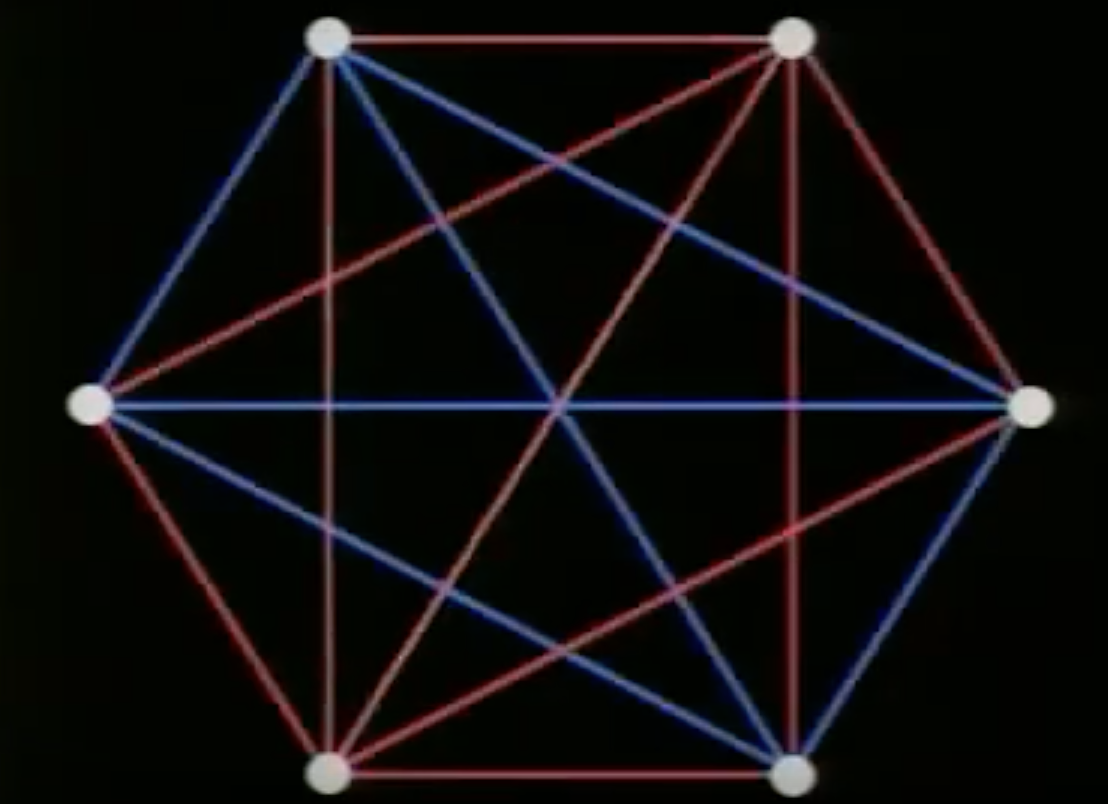 |
| Video Title | N is a number, A portrait of Paul Erdös | | Director | George Paul Csicsery |
| Date | 1993 |
| Grades | 7-20 |
| Keywords | GRAPH (NETWORK) THEORY |
|
| Notes | This documentary huamnizes graph theory by profiling a beloved practitioner. The concept of "Erdös Number" is useful, as well as the related "Kevin Bacon number."
|
|
| | | |
| High School (grades 9-12) | |
| | | |
|
cybernetics and systems theory I (one semester)
 | |
I think this class is the most important of the bunch. I've listed too many books, but the approach I recommend is to work through Ashby and Abraham & Shaw together, make Gleick required reading and let let them pick one other. | |
|
19.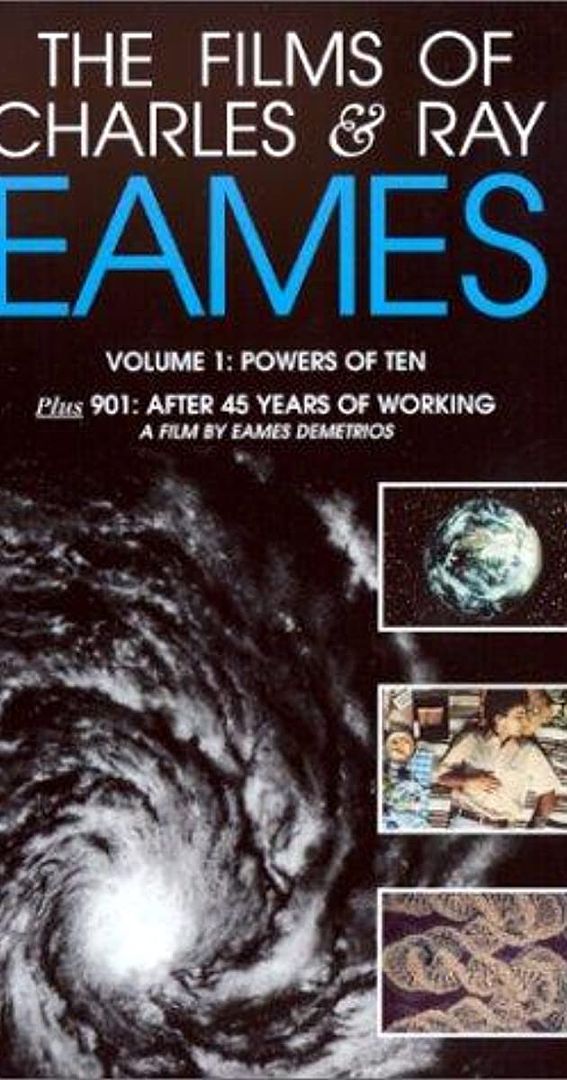 |
| Movie Title | Powers of Ten |
| Directed By | Charles and Ray Eames |
| Date | 1977 |
| Grades | 7-16 |
| Keywords | THE UNIVERSE |
|
| Notes | Show this video at the first class meeting to communicate the sweep of the subject matter. |
|
20.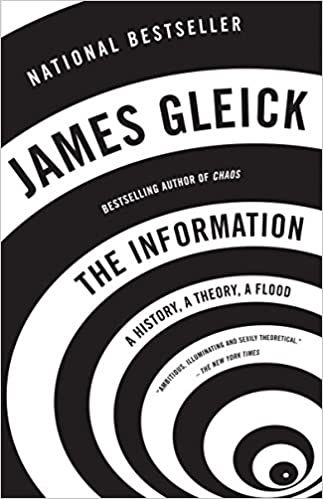 |
| Book Title | The Information: A History, a Theory, a Flood | | Author | Gleick, James |
| Date | 2011 |
| Grades | 7-14 |
| Keywords | INFORMATION THEORY |
|
| Notes | This book does a great job of describing the paradigm shifts civilization has gone through in the information age. |
|
21.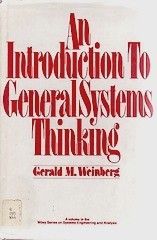 |
| Book Title | An Introduction to General Systems Thinking | | Author | Weinberg, Gerals M. |
| Date | 1975 |
| Grades | 7-16 |
| Keywords | SYSTEMS THINKING |
|
| Notes | A nice non-math introduction to the subject. |
|
22.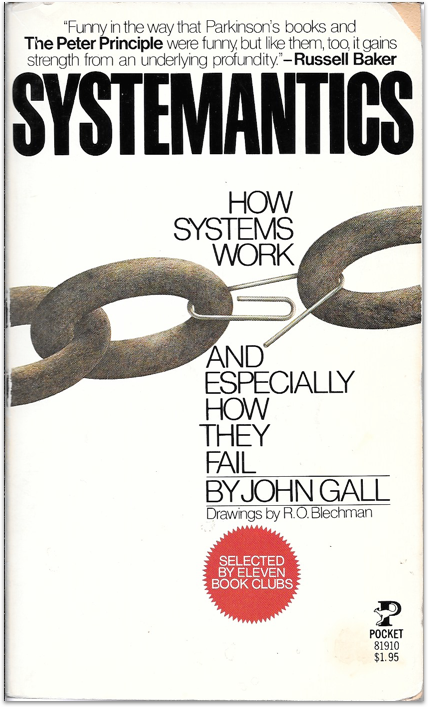 |
| Book Title | Systemantics: How Systems Work and Especially How They Fail | | Author | Gall, John |
| Date | 1977 |
| Grades | 7-16 |
| Keywords | HUMOR
SYSTEMS THINKING |
|
| Notes | A hilarious lampoon that also is full of truths. |
|
23. |
| Paper Title | Cybernetic Explanation | | Author | Bateson, Gregory |
| Date | 1967 |
| Grades | 7-16 |
| Keywords | CYBERNETICS |
|
| Notes | Have them read this essay the first week, and discuss. |
|
24.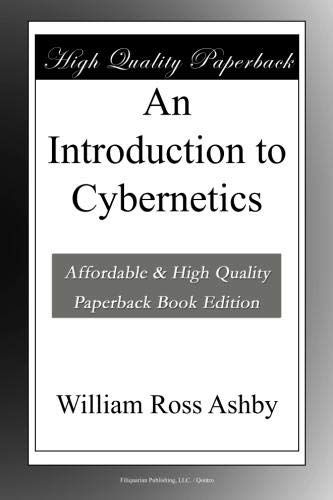 |
| Book Title | An Introduction to Cybernetics | | Author | Ashby, W. Ross |
| Date | 1956 |
| Grades | 7-16 |
|
| Notes | Thus classic work is still a great text. |
|
25. |
| Book Title | Dynamics: The Geometry of Behavior — Part One: Periodic Behavior | | Author | Abraham & Shaw |
| Date | 1982 |
| Grades | 7-16 |
| Keywords | LIGHT SYMBOLIC MATH
SYSTEMS THEORY |
|
| Notes | Ashby deals entirely with finite state systems. This book introduces the continuous case. Too bad there are no problems assigned. |
|
26.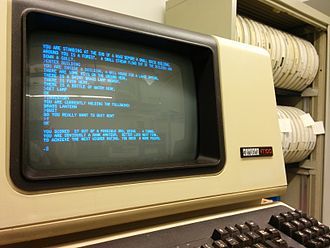 |
| Software Title | Colossal Cave Adventure | | From | |
| Grades | 7-20 |
| Keywords | FINITE STATE MACHINE WITH INPUT |
|
| Notes | Have the students play this game, which is mostly a finite state machine with inputs. Have them draw a map for extra credit.
|
|
| | | |
|
cybernetics and systems theory II (one semester)
 | |
This class continues the exploration of continuous systems. Work through Meadows and Abraham & Shaw over the semester, and let the "Chaos..." reading inspire discussions of periodic vs. chaotic attractors. | |
|
27.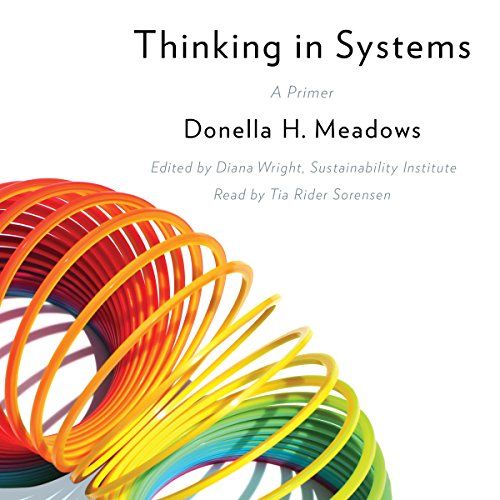 |
| Book Title | Thinking In Systems | | Author | Meadows, Donella |
| Date | 2008 |
| Grades | 7-16 |
| Keywords | LIGHT SYMBOLIC MATH
SYSTEMS THINKING |
|
| Notes | Meadows was a student and collaborator of Jay Forrester, and worked on the "Limits to Growth" study. This book is an extremely accessible introduction to systems modeling, low on math but high on rigor. |
|
28. |
| Book Title | Chaos: Making a New Science | | Author | Gleick, James |
| Date | 1987 |
| Grades | 9-20 |
| Keywords | SYSTEMS THEORY
NON-LINEAR SYSTEMS
CHAOS |
|
| Notes | A well told layperson's introduction to the birth of chaos theory in the 1980s. |
|
29. |
| Video Title | This equation will change how you see the world (the logistic map) | | Contributors | Veritasium |
| Date | 2020 |
| Grades | 19-20 |
| Keywords | CHAOS |
|
|
30.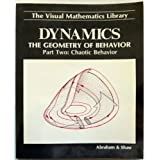 |
| Book Title | Dynamics: The Geometry of Behavior — Part Two: Chaotic Behavior | | Author | Abraham & Shaw |
| Date | 1982 |
| Grades | 7-16 |
| Keywords | LIGHT SYMBOLIC MATH
SYSTEMS THEORY |
|
| Notes | A wonderful menagerie of chaotic attractors. |
|
31.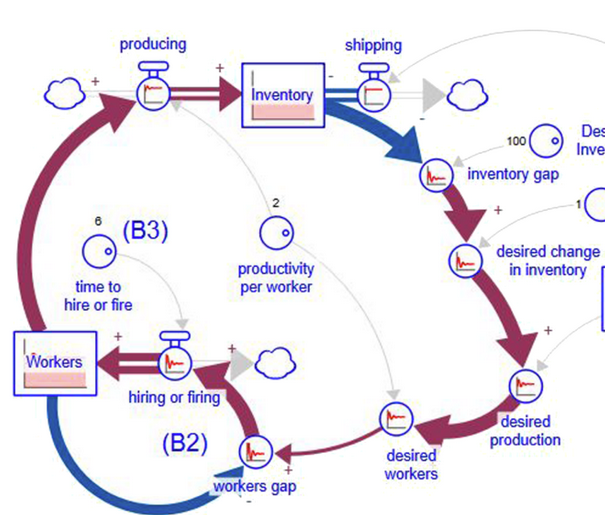 |
| Software Title | Stella | | From | ISEE Systems |
| Grades | 7-20 |
| Keywords | VISUAL MODELING
VISUAL PROGRAMMING
DYNAMICAL SYSTEMS
ORDINARY DIFFERENTIAL EQUATIONS |
|
| Notes | This is an expensive software package but schools get a break and hopefully can reuse it with many students. It allows them to visually build systems models like those in Meadows.
|
|
32. |
| Movie Title | Hidden Figures |
| Directed By | Theodore Melfi |
| Date | 2016 |
| Grades | 7-16 |
| Keywords | EULER'S METHOD |
|
| Notes | Based on the true story of mathematician Katherine Johnson and her team's contributions to the Apollo moon shot. |
|
| | | |
|
cybernetics and systems theory III (one semester)
 | |
In this semester the students learn more about how to analyze chaotic and other systems, and more real world examples. | |
|
33.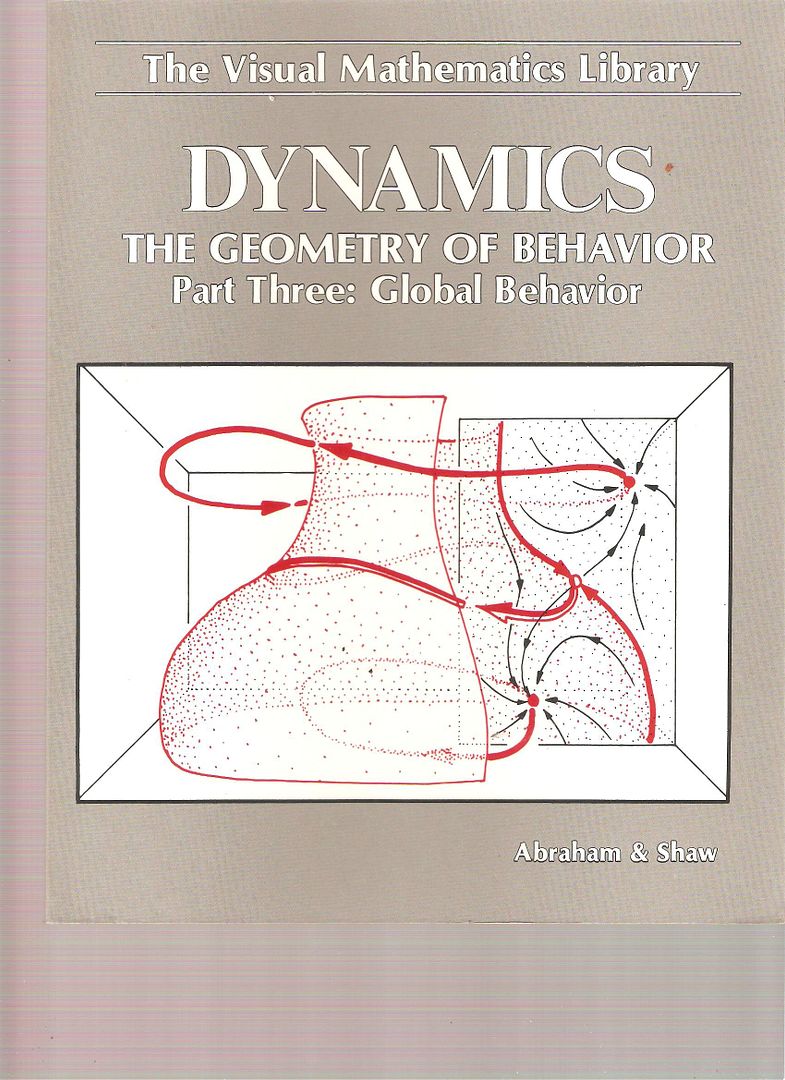 |
| Book Title | Dynamics: The Geometry of Behavior — Part Three: Global Behavior | | Author | Abraham & Shaw |
| Date | 1982 |
| Grades | 7-16 |
| Keywords | LIGHT SYMBOLIC MATH
SYSTEMS THEORY |
|
| Notes |
Continuing the cartoon version of systems theory. Work through this text over
the semester. |
|
34.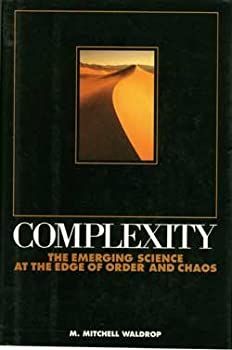 |
| Book Title | Complexity: The Emerging Science at the Edge of Order and Chaos | | Author | Waldrop, M. Mitchell |
| Date | 1992 |
| Grades | 13-20 |
| Keywords | SYSTEMS THEORY
NON-LINEAR SYSTEMS
CHAOS |
|
| Notes | A tale of real world problems bedeviled by simplistic models. |
|
35. |
| Book Title | Moneyball: The Art of Winning An Unfair Game | | Author | Lewis, Michael |
| Date | 2004 |
| Grades | 7-16 |
| Keywords | DATA ANALYTICS |
|
| Notes | One of the hardest tasks in modeling a system is choosing the right variables. Think of this as a baseball case study of identifying correct variables. |
|
36.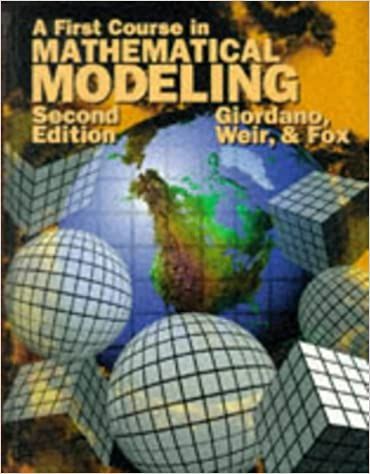 |
| Book Title | A First Course in Mathematical Modeling | | Author | Giordano, Fox & Horton |
| Date | 2013 |
| Grades | 11-16 |
| Keywords | COMPUTER PROGRAMMING
SIMULATION |
|
| Notes | Use this text to have the students create their own models of real world systems.
[I have not read this book.] |
|
37.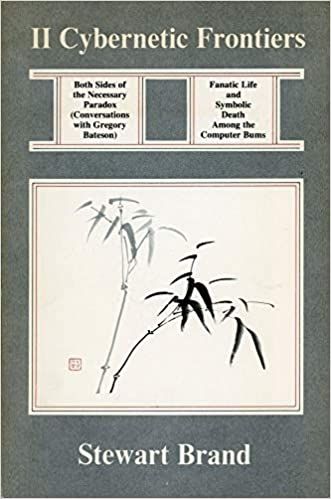 |
| Book Title | II Cybernetic Frontiers: Both Sides of the Necessary Paradox (Conversations with Gregory Bateson) & Fanatic Life and Symbolic Death Among the Computer Bums | | Author | Brand, Stewart |
| Date | 1974 |
| Grades | 7-20 |
| Keywords | CYBERNETICS, SPACEWAR, BATESON |
|
| Notes | This serves as a preview to entice students to take the Bateson class (below).
Online text available.
|
|
38. |
| Software Title | Spacewar | | Author | Russell, Graetz, Wiitanen, Saunders, Piner, et. al. |
| Date | 1962 |
| Grades | 7-20 |
| Keywords | HUMAN IN THE LOOP |
|
| Notes | Since the Brand book also discusses Spacewar, an early computer game that explored humans and computers in tight feedback loops (and paved the way for a huge industry) , you have to let them play the game.
( spacewar.oversigma.com ) |
|
39.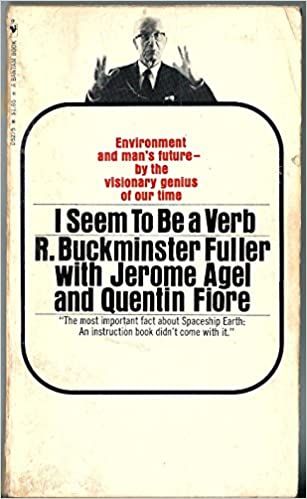 |
| Book Title | I Seem to Be a Verb | | Author | Fuller, Buckminster, Agel, Jerome and Fiore, Quenton |
| Date | 1970 |
| Grades | 7-20 |
| Keywords | SYNERGETICS |
|
| Notes |
This serves as a preview to entice students to take the Fuller class (below).c
[There may be an availability problem with this book -- it originally had a 65 cent (US) cover price and sold used for a quarter; now it's nearly $1000 on Amazon Markets. If necessary substitute "Operating Manual for Spaceship Earth.] |
|
| | | |
|
calculus for systems theory I & II (two semesters)
 | |
I once bragged that I could teach middle schoolers calculus if I
could leave out limits and proofs. In my eZine, "Cybernetics in the Third
Millennium (C3M)" I described how my daughter called my bluff at age 16 and I
gave a calculus summer school.
Teaching Calculus to a Sixteen-Year-Old
(2012) by Alan Scrivener
This course is based on that experiment.
| |
|
40.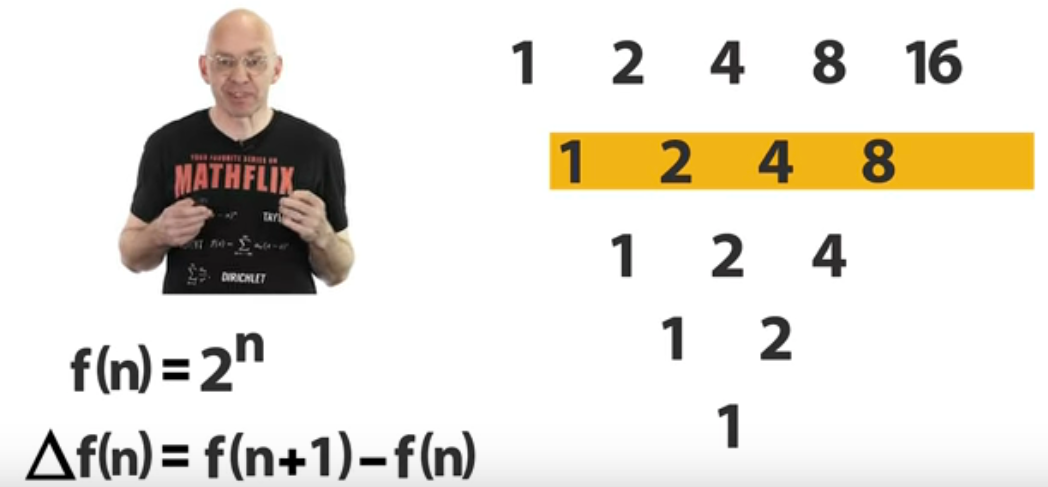 |
| Video Title | Why don't they teach Newton's calculus of 'What comes next?' | | Contributors | Mathologer |
| Date | 2021 |
| Grades | 11-20 |
| Keywords | FINITE CALCULUS |
|
| Notes |
This video explains a simple method developed by Newton for doing finite
calculus, and introduces key calculus concepts in an understandable way.
It is also the technique used by the famous gear computer of Charles Babbage,
the Difference Engine.
|
|
41. |
| Book Title | Professor E. McSquared's Original,
Fantastic and Highly Edifying Calculus Primer | | Author | Swann & Johnson |
| Date | 1975 |
| Grades | 11=14 |
| Keywords | SYMBOLIC MATH |
|
| Notes | This charming text in comic book form represents functions as cute robots that take in and dispense numbers, and covers the material in first semester college calculus, with problems. |
|
42. |
| Book Title | Mechanical Universe | | Author | Goodstein, David L. |
| Date | 1986 |
| Grades | 11-14 |
| Keywords | SYMBOLIC MATH |
|
| Notes | This text partially overlaps with the excellent video series of the same name. It teaches calculus for physics, which is an excellent way to learn. |
|
43. |
| Video Title | Mechanical Universe | | Contributors | Goodstein, Dr. David, Blinn, Jim, Buffa, Peter F., Rothschild, Mark |
| Date | 1985 |
| Grades | 11-20 |
| Keywords | MECHANICS, CALCULUS |
|
| Notes | Watch an episode a week and discuss. |
|
44. |
| Software Title | Wolfram Alpha | | From | |
| Grades | 7-20 |
| Keywords | SYMBOLIC SOLVER |
|
| Notes | This tool is available as a web page or smart phone app, and can solve every symbolic calculus problem I have thrown at it.
|
|
45.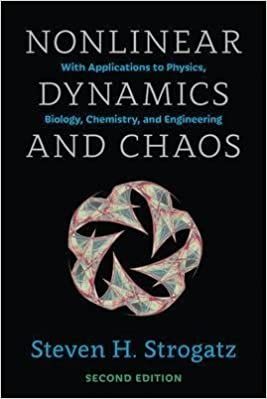 |
| Book Title | Nonlinear Dynamics and Chaos:
With Applications to Physics, Biology, Chemistry,
and Engineering | | Author | Strogatz, Steven H. |
| Date | 2014 |
| Grades | 9-16 |
| Keywords | SYMBOLIC MATH |
|
| Notes | Because several generationS of mathematicians and engineers studied linear systems and developed poor intuitions for the real world (like denying the exist of rogue waves on the ocean), I thinks it's important for students to study nonlinear systems first, and get to the admittedly beautiful linear theory later if ever.
[I have not read this book.] |
|
| | | |
|
systems theory for life sciences (one semester)
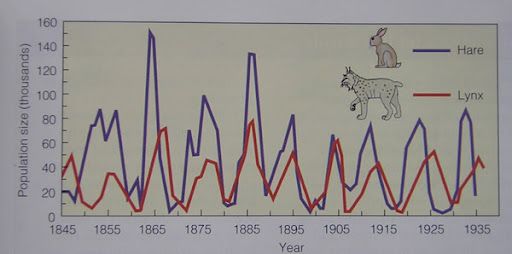 | |
For hundreds of years people have been building mathematical
models of physical systems, with good results, using concepts such as mass,
velocity, momentum and energy. But applying these same concepts to biological
systems has not been as fruitful. The discovery of chaos in the 1980s brought
a new set of tools for life sciences, and this course is designed to teach how
to use them.
Clearly there are too many books listed. Use Garfinkel, Shevtsov & Guo as the
main text and have students each pick one other book from Kelly, Dawkins,
Ridley and Levy. | |
|
46.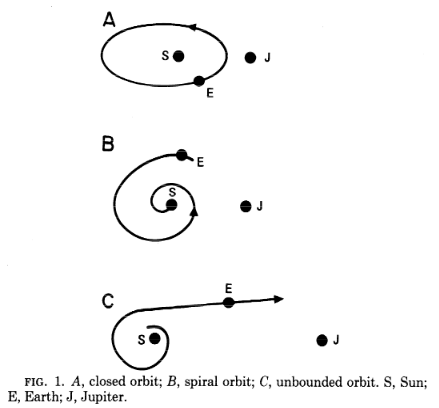 |
| Paper Title | A mathematics for physiology | | Author | Garfinkel, Alan |
| Date | 1983 |
| Grades | 11-20 |
| Keywords | CYBERNETICS |
|
| Notes |
This seminal paper from Dr. Garfinkel gives a brief history of systems theory
from Newton to the post-chaos era and illustrates why it is so useful for life
sciences. It also contains what I call "Garfinkel's Law," the idea that the
sophistication of a scientific specialty and its models can be roughly measured
by the complexity of the model's attractors (point, loop, strange attractor).
|
|
47.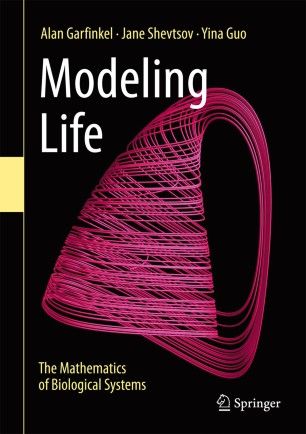 |
| Book Title | Modeling Life: The Mathematics of Biological Systems | | Author | Garfinkel, Shevtsov & Guo |
| Date | 2017 |
| Grades | 9-16 |
| Keywords | SYMBOLIC MATH
LIFE SCIENCES |
|
| Notes |
Over a decade ago I concluded that the pre-med college curriculum was flawed.
It generally requires one year of college calculus. Doctors I know have
said this was pretty useless. Meanwhile the math majors get more advanced
calculus classes until they reach linear algebra in the third year, which is
an introduction to systems theory and Ordinary Differential Equations (ODEs).
This is the class I thought would be useful to medical students. I figured if
you took out the proofs and added computer assistance, you could cover much
of his material in the first year.
Well, in 2021 I found out that Dr. Alan Garfinkel at UCLA (who I met in the
1990s) had been thinking along similar lines. In this text he and his team
present the systems theory they deem useful to physicians, and they go one
further by dealing with nonlinear systems. Their most laudable effort though
went into getting a number of medical schools to accept this class instead of
a year of calculus.
[I have not read this book.] |
|
48. |
| Video Title | Mathematics for Life Sciences - Garfinkel Lectures | | Contributors | Garfinkel, Alan |
| Date | 2020 |
| Grades | 13-20 |
| Keywords | NONLINEAR SYSTEMS |
|
| Notes |
This series covers some of the material in Garfinkel, Shevtsov & Guo's text.
|
|
49..jpg) |
| Book Title | Out of Control: The New Biology of Machines,
Social Systems, and the Economic World | | Author | Kelly, Kevin |
| Date | 1992 |
| Grades | 7-16 |
| Keywords | LIFE SCIENCES |
|
| Notes |
A science journalist and Whole Earth Review contributor's tangled tale of our
recent realizations of how unmanageable life is. |
|
50.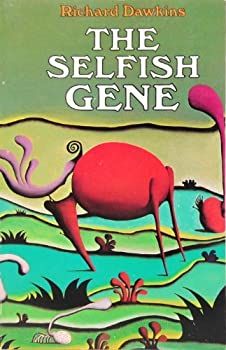 |
| Book Title | The Selfish Gene | | Author | Dawkins, Richard |
| Date | 1976 |
| Grades | 7-16 |
| Keywords | LIFE SCIENCES |
|
| Notes | Some reviewers have said this book focuses too much on competition at the expense of cooperation, but I think it is a very rigorous look at how genes become more adaptive. It also contains the first use of the word "meme," coined by Dawkins. |
|
51.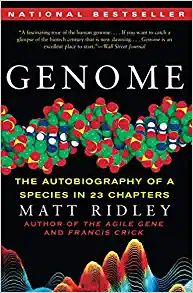 |
| Book Title | Genome: The Autobiography of a Species in 23 Chapters | | Author | Ridley, Matt |
| Date | 2006 |
| Grades | 7-16 |
| Keywords | LIFE SCIENCES |
|
| Notes | This is a twenty year old snapshot of our understanding of the human genome. Perhaps a better book is out now. |
|
52.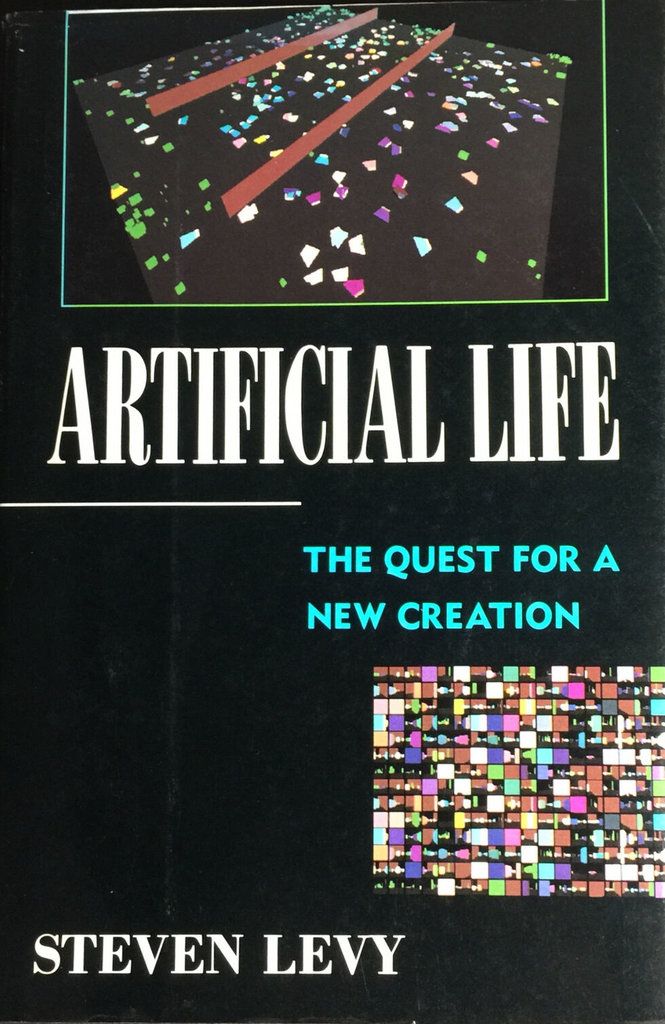 |
| Book Title | Artificial Life: The Quest for a New Creation | | Author | Levy, Steven |
| Date | 1992 |
| Grades | 9-16 |
| Keywords | LIFE SCIENCES |
|
| Notes |
Some mysteries of life and evolution can be illuminated through simulations. |
|
53.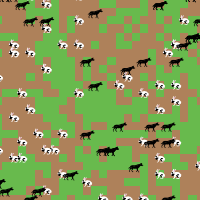 |
| Software Title | Predator, Prey, Poison | | From | NetLogo |
| Grades | 7-20 |
| Keywords | CHAOS IN POPULATION MODELS |
|
| Notes |
This game allows student to play with predator/prey models and observe the sometimes chaotic results.
|
|
54. |
| Book Title | A Kid's Guide to Making a Terrarium | | Author | Bearce, Stephanie |
| Date | 2009 |
| Grades | 9-16 |
| Keywords | LIFE SCIENCES |
|
| Notes | Bateson used to complain about the arrogance of believing your own theories, and as an antidote recommended exposing your mind to more "natural history," the real behavior of real living things. Have the students raise some critters. |
|
55. |
| Paper Title | On Empty-Headedness Among Biologists and State Boards of Education | | Author | Bateson, Gregory |
| Date | 1970 |
| Grades | 7-16 |
| Keywords | EVOLUTION |
|
| Notes |
In this contrarian essay, Bateson argues against banning religious creation
stories from biology classes. He essentially says that though their
answers may be wrong or even nonsensical, the questions they ask are profound,
often better than those asked by evolutionists. |
|
| | | |
|
finite systems (one semester)
 | |
I guess if you believe the quantum physicists that there is a low
limit to the sizes of space and time intervals (Planck limits) then all
systems are finite, but we still use math tools that assume continuous
functions and infinities. This class is an opportunity to explore simple
systems that have complex behaviors. | |
|
56.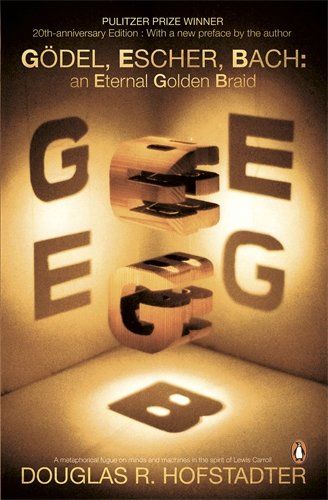 |
| Book Title | Godel, Escher, Bach: an Eternal Golden Braid | | Author | Hofstadter, Douglas R. |
| Date | 1979 |
| Grades | 9-16 |
| Keywords | CONSCIOUSNESS |
|
| Notes | Hofstadter shows how some very simple finite systems can quickly get bound up in paradoxes, building towards an intuitive understanding of Godel's Incompleteness Theorem. |
|
57.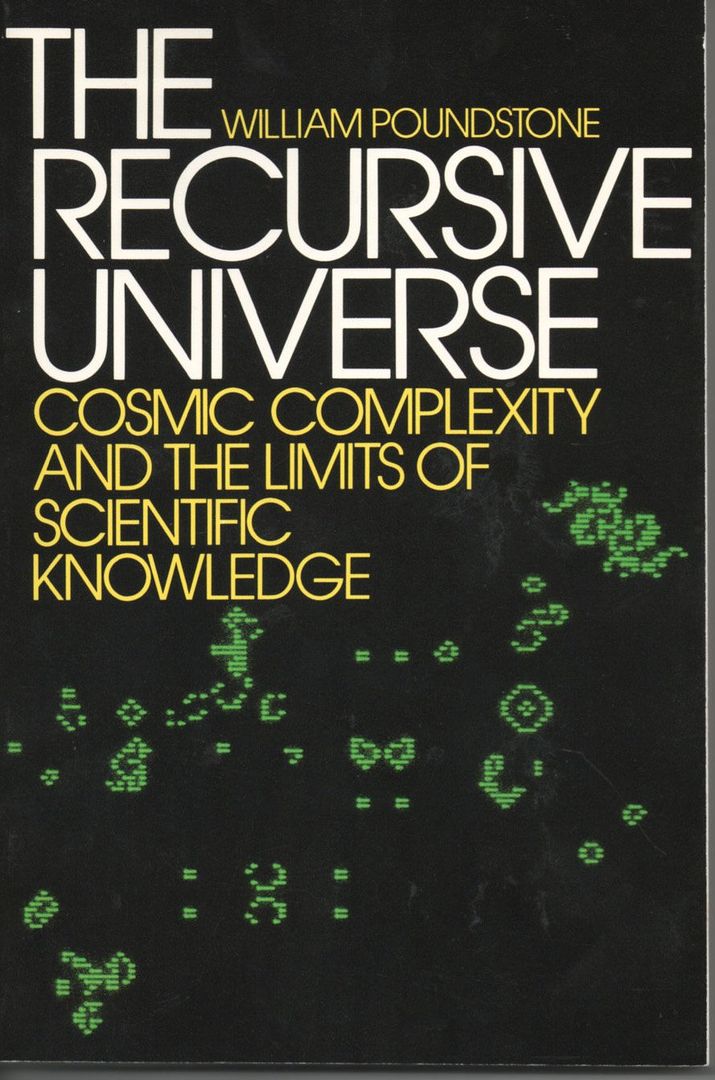 |
| Book Title | The Recursive Universe: Cosmic Complexity and
the Limits of Scientific Knowledge | | Author | Poundstone, William |
| Date | 1985 |
| Grades | 11-16 |
| Keywords | CELLULAR AUTOMATA |
|
| Notes | Before Wolfram, this book pointed the way towards using cellular automata to understand emergent properties of systems. |
|
58. |
| Book Title | A New Kind of Science | | Author | Wolfram, Stephen |
| Date | 2002 |
| Grades | 7-16 |
| Keywords | CELLULAR AUTOMATA |
|
| Notes |
When Wolfram published this book he got a lot of blowback, mostly for bragging
I think, but I thought he was definitely onto something. I use the term "Wolfram's Method" for his technique of looking at — or trying to look at — all possible outcomes of a defined system. I have used the method to study Boolean Algebra (symbolic logic) and finite state machines. This book applies the method to cellular automata, Turing machines and other models.
The notes are a good source of extra credit projects. |
|
59.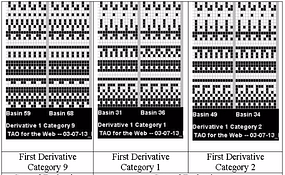 |
| Paper Title | Steps to an ecology of emergence | | Authors | Malloy, T. E., Bostic St Clair, C. & Grinder, J. |
| Date | 2005 |
| Grades | 09-20 |
| Keywords | HIERARCHY, SELF ORGANIZING SYSTEMS |
|
| Notes |
This paper appeared in a special edition of "Cybernetics & Human Knowing:
A Journal of Second-Order Cybernetics Auto Poiesis and Cyber-Semiotics"
(v. 11, n. 3) devoted to "Gregory Bateson -- essays for an ecology of ideas."
Without saying so, it applies Wolfram's method to self-organizing hierarchical
systems, with delightful results.
|
|
60.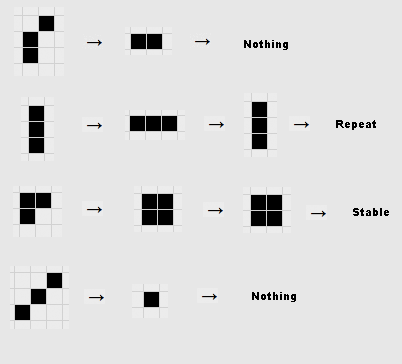 |
| Software Title | Conway's Life | | Author | John Horton Conway, et. al. |
| Date | 1970 |
| Grades | 7-20 |
| Keywords | CELLULAR AUTOMATA |
|
| Notes | You gotta let the students play with Conway's "Life" game.
|
|
| | | |
|
machine learning (one semester)
 |
I'm not going to call this class "artificial intelligence" because
I think we are a long way off from there. But we can get software to learn,
which we confusingly call "machine learning." A lot of what is written on
this topic is gibberish by people who are not practitioners, so I think it's
important to have students actually program the software.
For starters have the students build and play with a "MENACE" machine, which
is literally a cardboard and beads computer that learns to play tic-tac-toe.
MENACE (Matchbox Educable Naughts and Crosses Engine) is the invention of
Donald Michie, a biologist at the University of Edinburgh. He first described
the machine in 'Trial and Error', in Penguin Science Survey 1961, Vol. 2.
It clearly illustrates some simple concepts in machine learning. It is tersely
but adequately described in a short post:
Menace: A simple tic tac toe learning computer constructed out of just 300 matchboxes and colored beads.
(2003) by Joth
The Hofstadter book describes a project to program a word scramble solver
that makes mistakes similar to human ones. | |
|
61.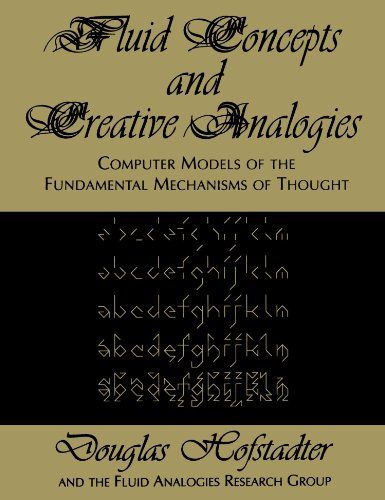 |
| Book Title | Fluid Concepts and Creative Analogies: Computer Models Of The Fundamental Mechanisms Of Thought | | Author | Hofstadter, Douglas R. |
| Date | 1996 |
| Grades | 9-16 |
| Keywords | MACHINE LEARNING |
|
| Notes | Work through this text as a sideline through the semester. |
|
62. |
| Book Title | Introduction to Machine Learning with Python:
Guide for Data Scientists | | Author | Muller & Guido |
| Date | 2003 |
| Grades | 11-20 |
| Keywords | COMPUTER PROGRAMMING
MACHINE LEARNING |
|
| Notes | Use this or another text to explore writing machine learning software.
[I have not read this book.] |
|
63. |
| Software Title | Python | | Author | Guido van Rossum |
| Date | 1991 |
| Grades | 8-20 |
| Keywords | INTERACTIVE PROGRAMMING |
|
| Notes |
Python is a popular, powerful language that is easy to get started with, and
has an interactive mode for exploring. There is also an active and helpful
online community.
|
|
64. |
| Toy | LEGO Mindstorms NXT 2.0 |
| Date | 2009 |
| Grades | 7-12 |
| Keywords | ROBOTICS |
|
| Notes | For a change of pace, let the students build and program robots. (You may want to get a more recent version of LEGO Mindstorms.) |
|
| | | |
|
systems for business (one semester)
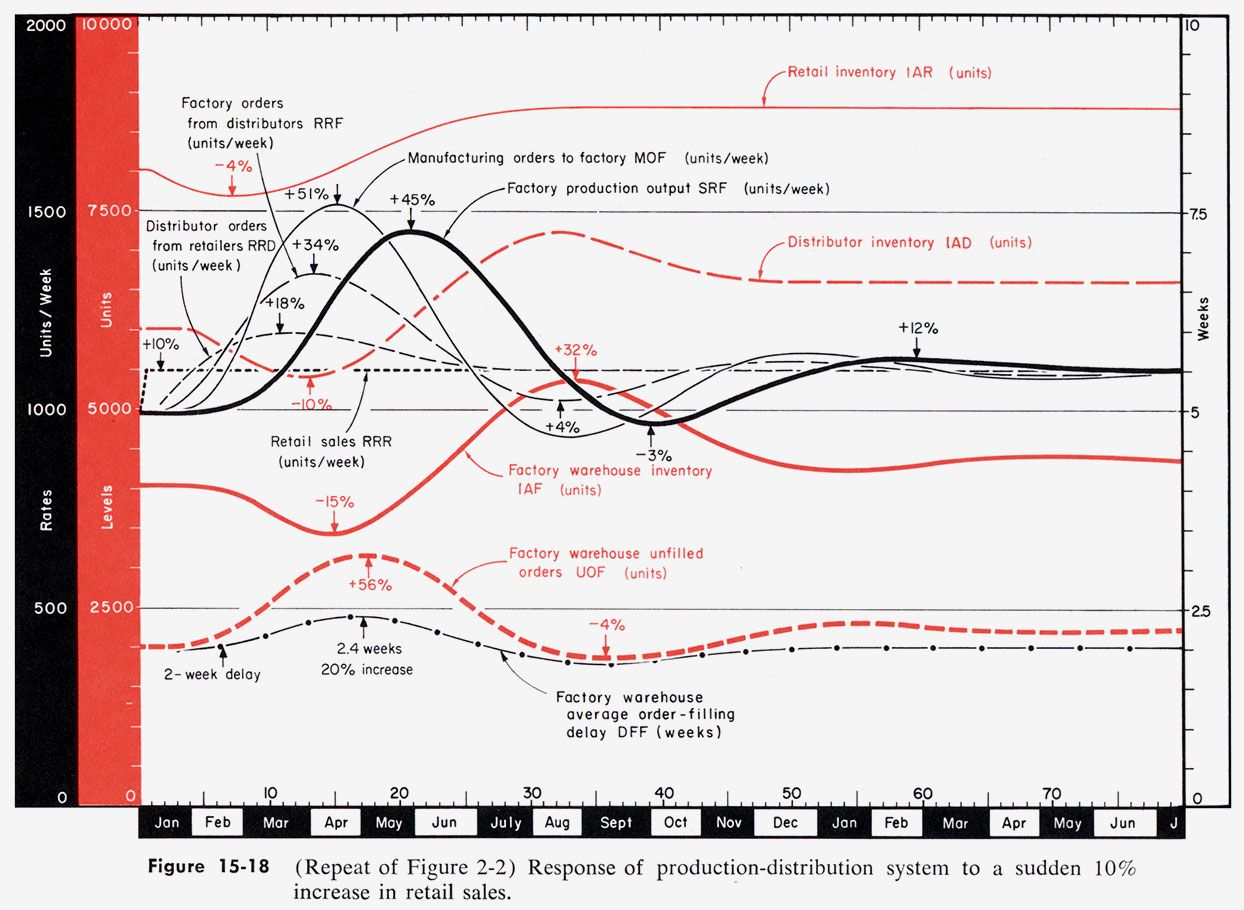 | |
|
In the two decades that I've been writing my eZine C3M (op. cit.) the most
requested subject for me to address has been applying cybernetics and systems
theory to business. For many this points directly to the work of Stafford
Beer, author of "Brain of the Firm" among many others, and a pioneer of
operations research and management cybernetics. But I dunno, maybe it's me but
I've read some of his stuff and didn't get many takeaways. So instead I
have focused on some early work by Forrester, a recent guide to business
analytics for the lay person, and a recent text in use at University of
California at San Diego (UCSD).
But first have the students pick either large or small businesses, and
read either Peters & Waterman or Gerber. These books contain no cybernetics
or systems theory (overtly), but deal with the human elements in management.
They are emphatic reminders that there is art as well as science in operating
a business.
| |
|
65.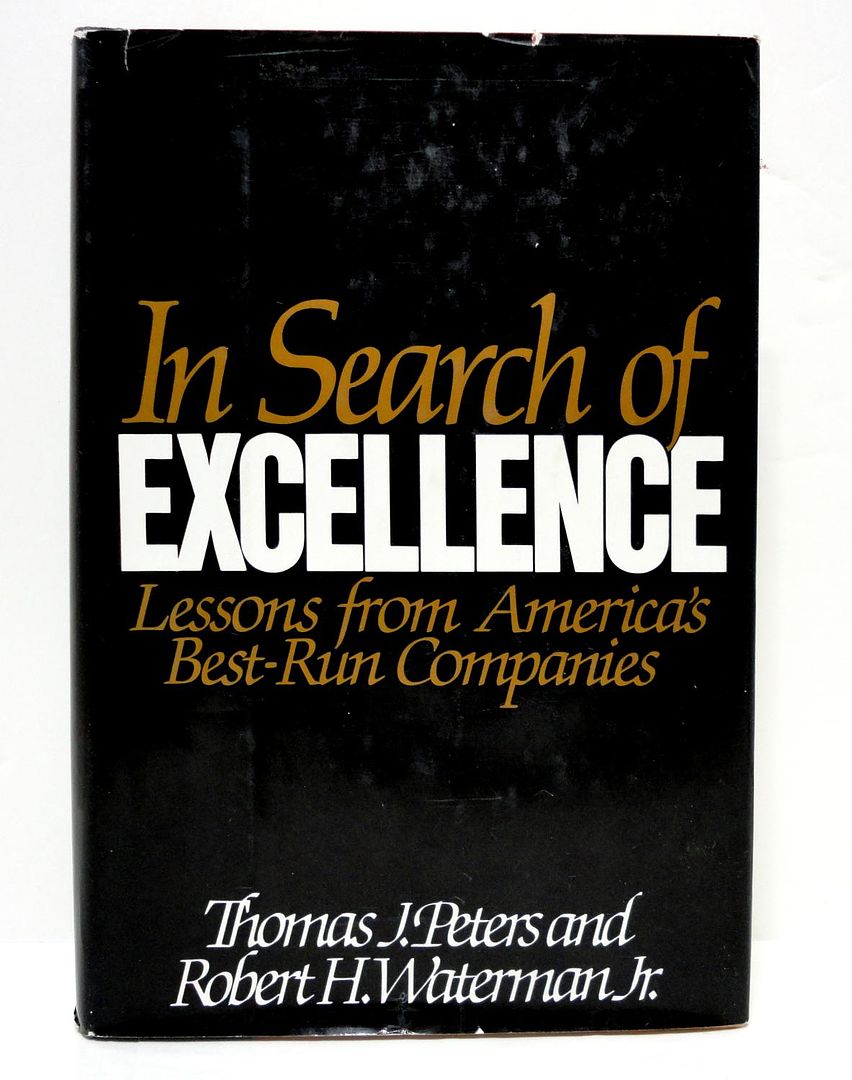 |
| Book Title | In Search of Excellence: Lessons from America's Best-Run Companies | | Authors | Peters, Thomas J. Peters, Waterman, Robert H. Jr. |
| Date | 1982 |
| Grades | 11-16 |
| Keywords | LARGE BUSINESS MANAGEMENT |
|
| Notes |
Bravely looks as the paradoxes of great companies, such as "simultaneous
loose-tight properties." |
|
66. |
| Book Title | The E-Myth Revisited: Why Most Small Businesses Don't Work and What to Do About It | | Author | Gerber, Michael E. |
| Date | 1985 |
| Grades | 09-16 |
| Keywords | SMALL BUSINESS MANAGEMENT |
|
| Notes |
The "E-Myth" (entrepeneur myth) is that you can turn your hobby into a business
and it will be smooth sailing. This book is a guide to weathering the storms. |
|
67.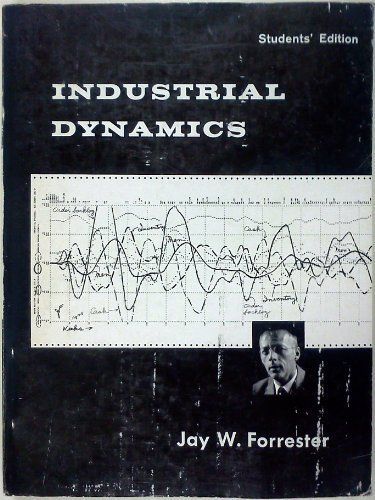 |
| Book Title | Industrial Dynamics | | Author | Forrester, Jay W. |
| Date | 1985 |
| Grades | 9-20 |
| Keywords | MANAGEMENT
SIMULATION |
|
| Notes |
Back when computers were obscenely expensive Jay Forrester at the Massachusetts
Institute of Technology (MIT) got funded to simulate business processes, and
kicked off a revolution of better understanding business dynamics. Much of
this book deals with inventory and shipping delays, which can be very
unintuitive.
[I have not finished this book.] |
|
68.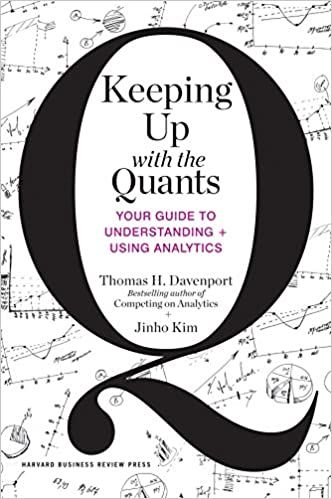 |
| Book Title | Keeping Up with the Quants: Your Guide to Understanding and Using Analytics | | Author | Davenport & Kim |
| Date | 2013 |
| Grades | 11-16 |
| Keywords | SYMBOLIC MATH |
|
| Notes |
This not a text on how to become a "quant" (quantitative business analysts),
though it might not be a bad place start. As the saying goes, "You can't
manage what you can't measure." This book helps business people begin
collecting the kind of data the quants will find useful.
[I have not finished this book.] |
|
69.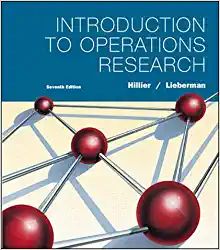 |
| Book Title | Introduction to Operations Research | | Author | Hillier, Frederick |
| Date | 2014 |
| Grades | 11-16 |
| Keywords | SYMBOLIC MATH |
|
| Notes |
Operations research, also known as management science, is a grab bag of
rigorous techniques developed by scientists to solve problems in logistics and
other business challenges.
[I have not finished this book.] |
|
| | | |
|
special seminar: the Pattern Which Connects of Gregory Bateson (one semester)
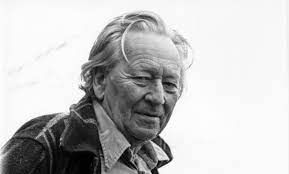 | |
Bateson began his career as an anthropologist, but after participating in the Macy Foundation meetings at which cybernetics was born he began to move from field to field bringing clarity: psychiatry, ecology, biology, ethology (animal behavior), art, religion and epistemolgy (how we know what we know), bringing a cybernetic sensibility to each.
He was my mentor at Kresge College, University of California at Santa Cruz (UCSC). | |
|
70.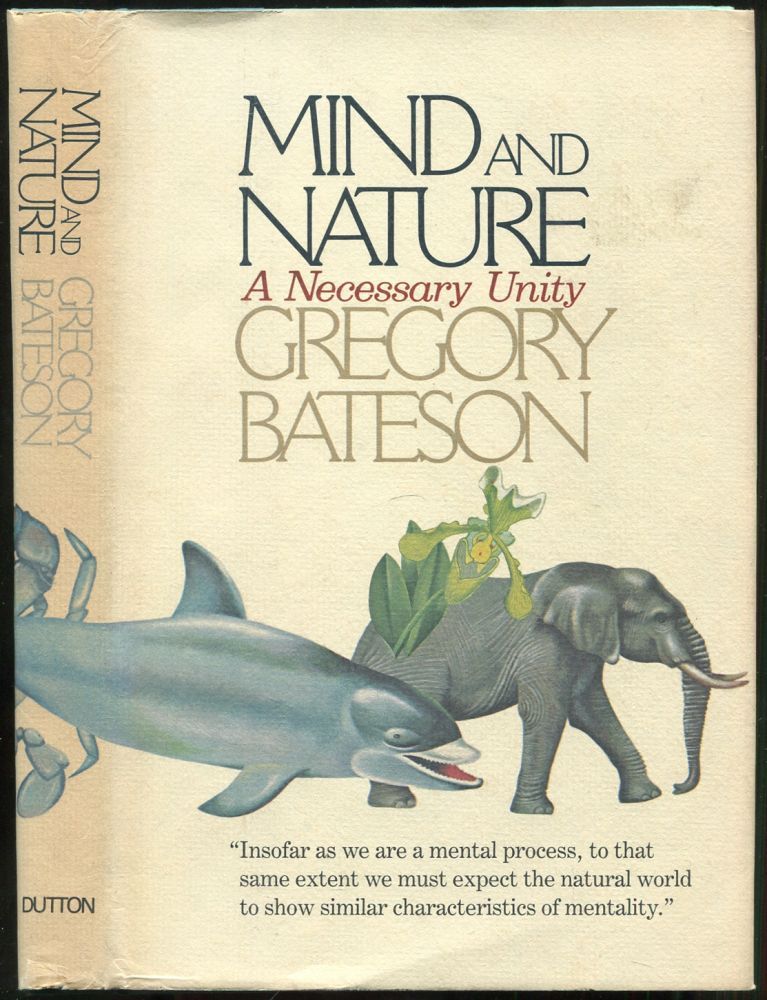 |
| Book Title | Mind and Nature, A Necessary Unity | | Author | Bateson, Gregory |
| Date | 1979 |
| Grades | 7-20 |
| Keywords | SYSTEMS THINKING
LIFE SCIENCES |
|
| Notes |
Bateson's most accessible book, the only one he wrote for the general public. |
|
71.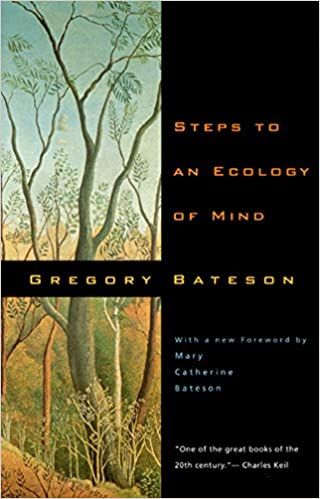 |
| Book Title | Steps to an Ecology of Mind | | Author | Bateson, Gregory |
| Date | 1972 |
| Grades | 9-20 |
| Keywords | CYBERNETICS
MENTAL SYSTEMS |
|
| Notes |
This collection of papers, essays and talks by Bateson span most of his career. The received wisdom is to read the Metalogues, and then read the book backwards, section by section. |
|
72. |
| Book Title | Our Own Metaphor: A Personal Account of a Conference on the Effects of Conscious Purpose on Human Adaptation | | Author | Bateson, Mary Catherine |
| Date | 1972 |
| Grades | 9-20 |
| Keywords | CYBERNETICS
MENTAL SYSTEMS
CONSCIOUSNESS |
|
| Notes | Most of the important conversations at a seminar happen during session breaks, and are usually not transcribed. Bateson's daughter Mary Catherine paid attention during her father's conference on "The Effects of Conscious Purpose on Human Adaptation" and recorded a lot of good stuff. Both the ideas and the interactions are valuable. |
|
| | | |
|
special seminar: the Synergetics of Bucky Fuller (one semester)
 | |
If not on an intellectual island, Fuller certainly was on his own
peninsula of systems theory, and his work doesn't connect much to others, but
he was such a profound thinker he is worth studying. | |
|
73.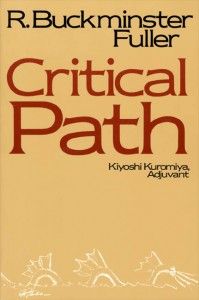 |
| Book Title | Critical Path | | Author | Fuller, R. Buckminster & Kuromiya, Kiyoshi |
| Date | 1978 |
| Grades | 9-20 |
| Keywords | SYNERGETICS |
|
| Notes | In my opinion the best, clearest statement of Fuller's ideas in his writings. |
|
74.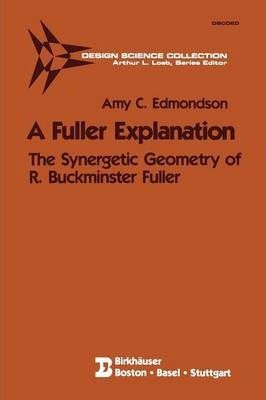 |
| Book Title | A Fuller Explanation: The Synergetic
Geometry of R. Buckminster Fuller | | Author | Edmondson, Amy |
| Date | 1987 |
| Grades | 7-20 |
| Keywords | SYNERGETICS |
|
| Notes | Edmondson worked for Fuller at the end of his life, and after he was gone wrote this book to explain his geometric ideas in plain English. |
|
75. |
| Book Title | Bucky Works: Buckminster Fuller's Ideas for Today | | Author | Baldwin, J. |
| Date | 1996 |
| Grades | 7-20 |
| Keywords | SYNERGETICS |
|
| Notes | Baldwin is a tinkerer who has played woth many of Fuller's designs, and talks about the nuts and bolts of his inventions. |
|
76.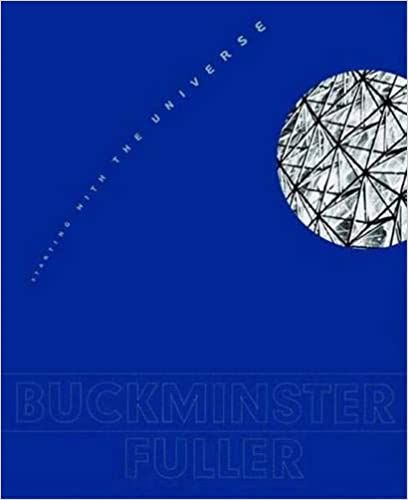 |
| Book Title | Buckminster Fuller: Starting with the Universe (Whitney Museum of American Art Book) | | Author | Hays, Miller, Picon, Smith & Tomkins |
| Date | 2008 |
| Grades | 7-20 |
| Keywords | SYNERGETICS |
|
| Notes | Many architects denied Fuller was one of them; same with many engineers. But artists seemed to embrace him as one of their own. This view from the Whitney Museum of American Art emphasizes that aspect of his work. |
|
77.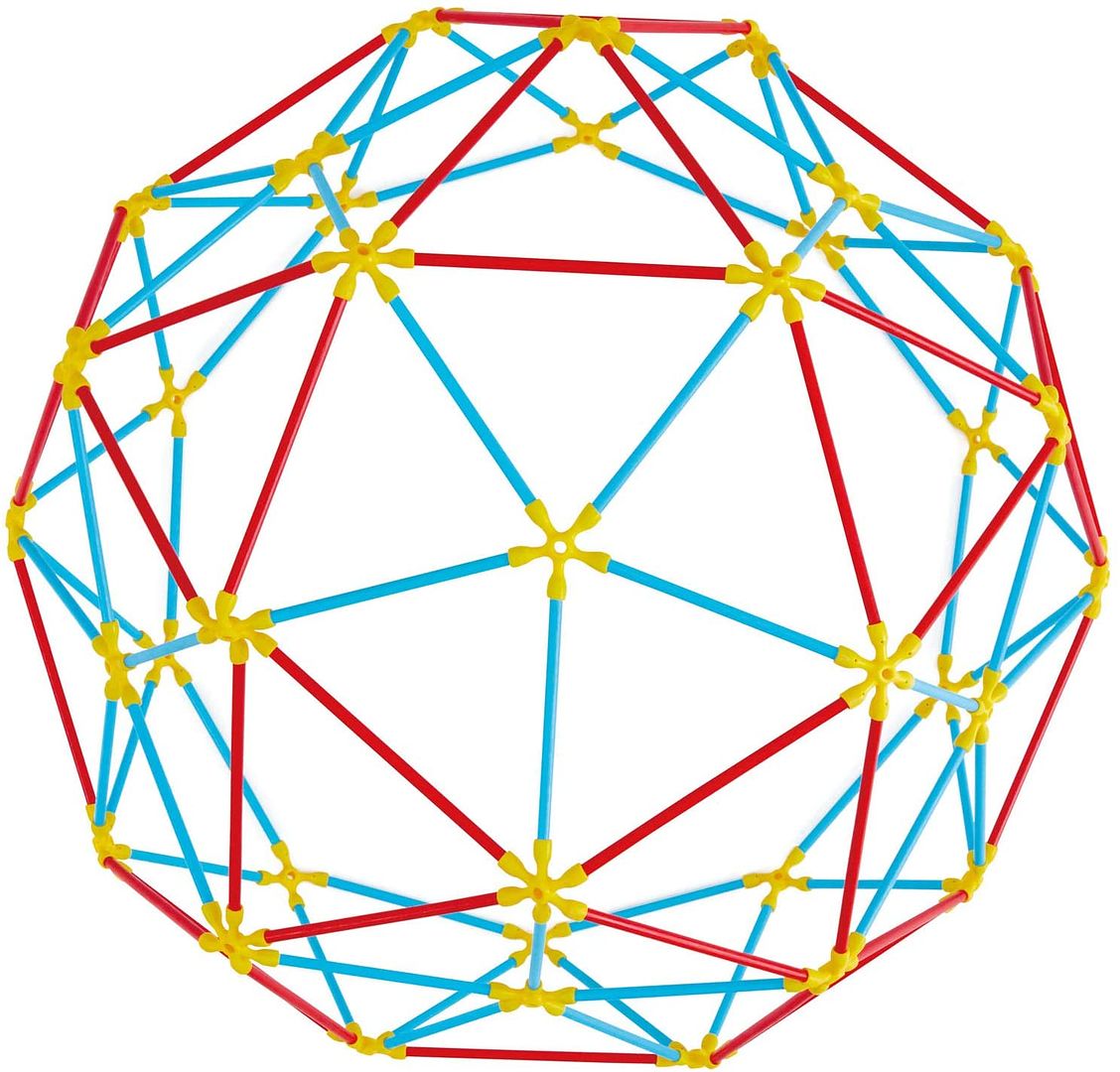 |
| Toy | Flexistix STEM Building Geodesic Structures, Featuring 177 Multi-Colored Bamboo Pieces | From | Hape |
| Date | 2018 |
| Grades | 7-20 |
| Keywords | GEODESICS |
|
| Notes |
You can't talk about geodesics without playing with the shapes. This is one
of many kits available. You can also build octet trusses out of toothpicks
and miniature marshmallows. You probably should begin the class by having the students build the 5 Platonic solids out of toothpicks and miniature marshmallows, and note that only the 3 made of triangles are stable. |
|
| | | |
| University Undergraduate (grades 13-16) | |
| | | |
|
advanced topics in systems theory I & II (two semesters)
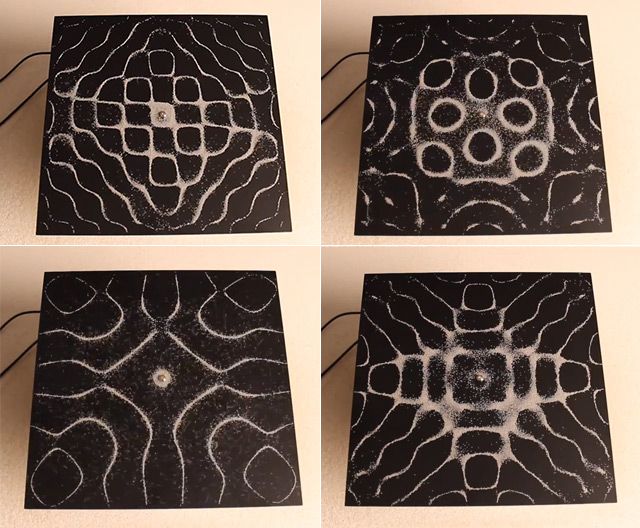 | |
This is a class to explore Partial Differential Equations (PDE) in the context of systems theory.
The above illustration shows sand on cymbals, making shapes predicted by PDEs. | |
|
| 78.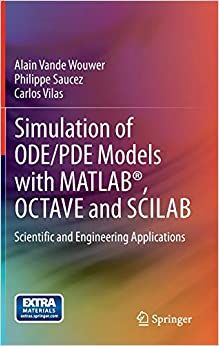 |
| Book Title | Simulation of ODE/PDE Models with MATLAB,
OCTAVE and SCILAB: Scientific and Engineering Applications | | Author | Vande Wouwer, Alain, Saucez, Philippe, & Vilas Fernandez, Carlos |
| Date | 2014 |
| Grades | 13-20 |
| Keywords | COMPUTER PROGRAMMING
SIMULATION
DIFFERENTIAL EQUATIONS |
|
| Notes |
Instructions on how to model systems and play with the models in Matlab and
similar packages.
[I have not read this book.] |
|
79. |
| Software Title | MATLAB | | From | Mathworks |
| Grades | 9-20 |
| Keywords | SYMBOLIC SOLVER |
|
| Notes |
The acclaimed Matlab software — pricey but there are educational discounts.
|
|
80.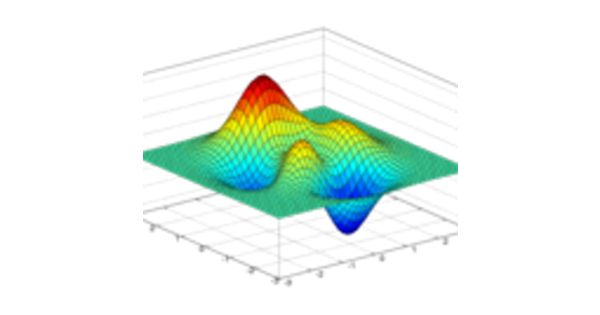 |
| Software Title | Octave | | From | Mathworks |
| Grades | 9-20 |
| Keywords | SYMBOLIC SOLVER |
|
| Notes | A similar package to Matlab available for free.
|
|
81.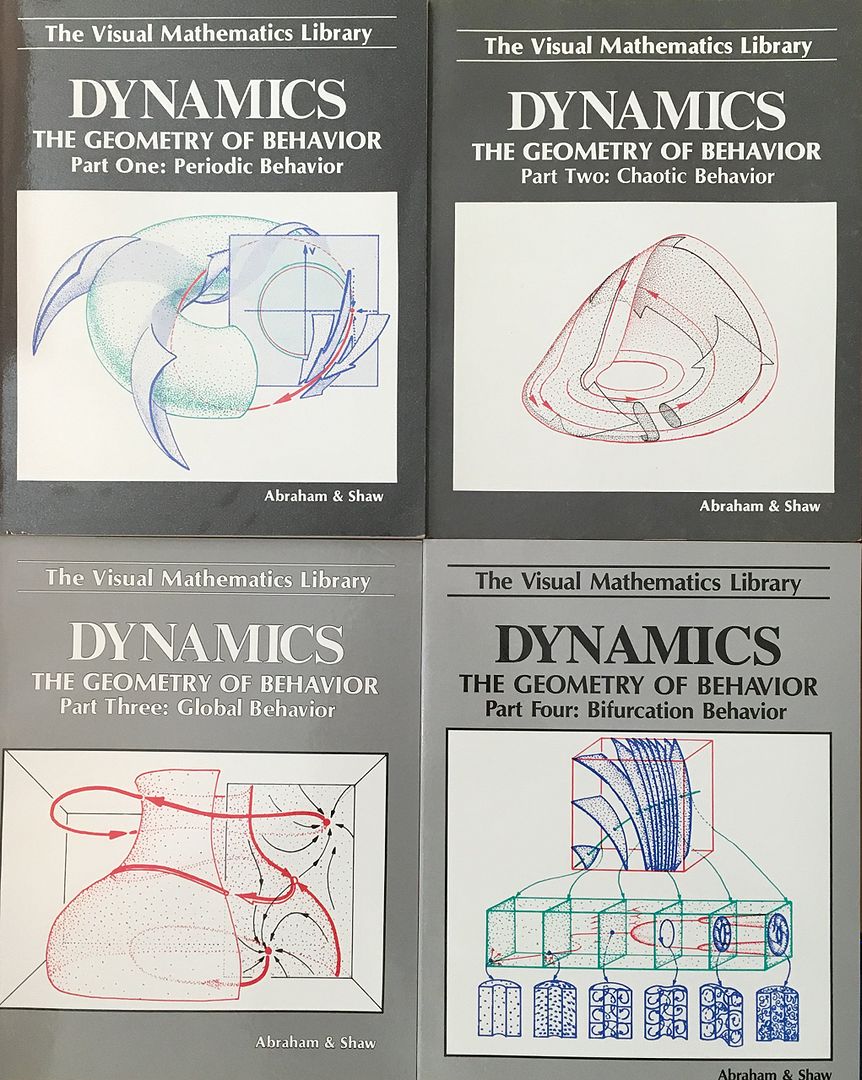 |
| Book Title | Dynamics: The Geometry of Behavior (Vols. 1-4) | | Author | Abraham & Shaw |
| Date | 1982 |
| Grades | 13-20 |
| Keywords | NON-LINEAR SYSTEMS
CHAOS |
|
| Notes |
These volumes are listed for various classes above, but the idea here os to go
back through them building models of each example and playing with them. |
|
| | | |
|
advanced linear systems I & II (two semesters)
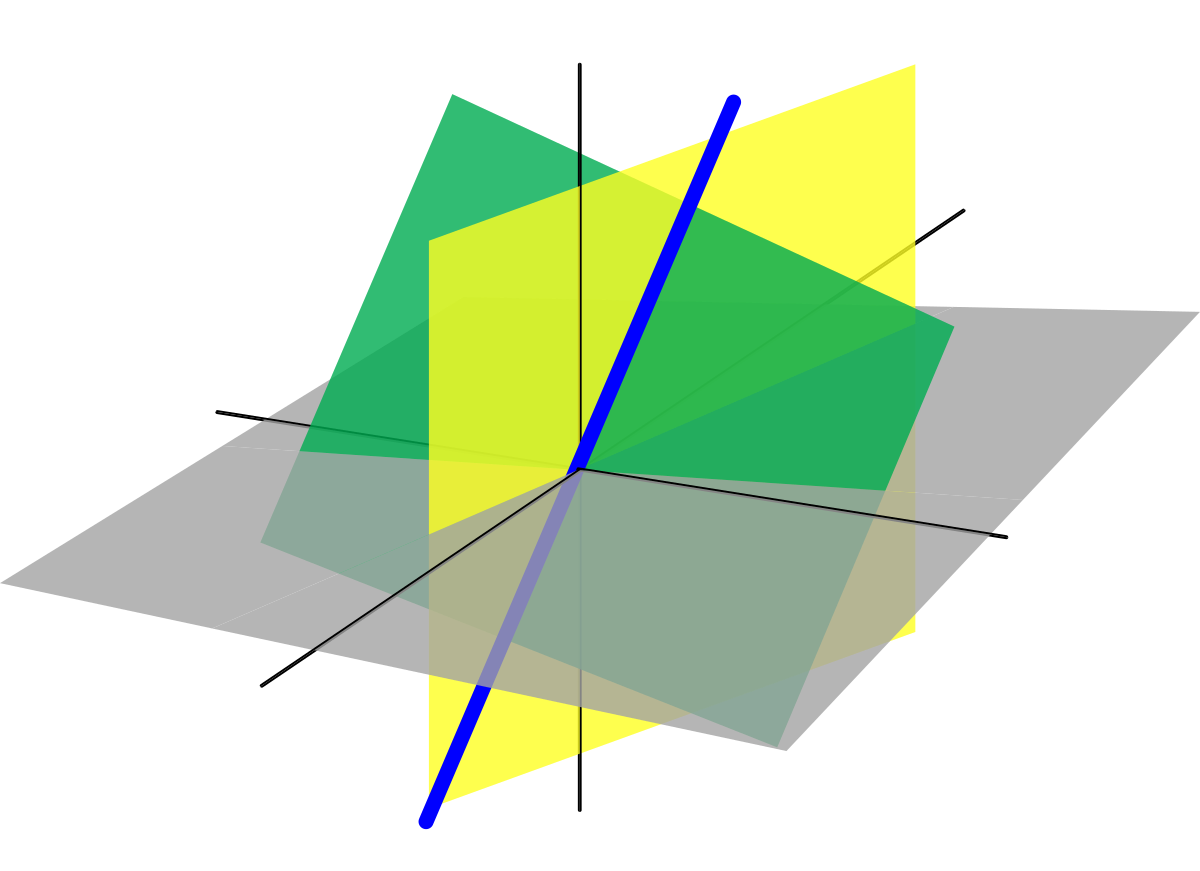 | |
In the old days when few nonlinear systems were understood, both mathematicians end engineers were taught the linear theories and so generations developed false intuitions. This lead to errors in bridge design, understanding water waves, and even economic decisions. For this reason I advocate for teaching nonlinear techniques first, kludgy though they are. But the linear systems theory is one of the most beautiful in all of mathematics, and it is useful in some cases. This course explores it at length. | |
|
82.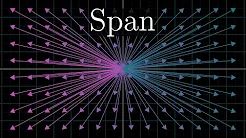 |
| Video Title | Essence of linear algebra [16 videos] | | Contributors | 3Blue1Brown — Sanderson, Grant |
| Date | 2021 |
| Grades | 11-20 |
| Keywords | LINEAR ALGEBRA |
|
| Notes | Great visual explanations of linear algebra concepts. Work through them over the semester.
|
|
83. |
| Book Title | The Manga Guide to Linear Algebra | | Author | Shin & Iroha |
| Date | 2012 |
| Grades | 13-20 |
| Keywords | SYMBOLIC MATH |
|
| Notes | A delightful translation of a Japanese comic about love and math. |
|
84.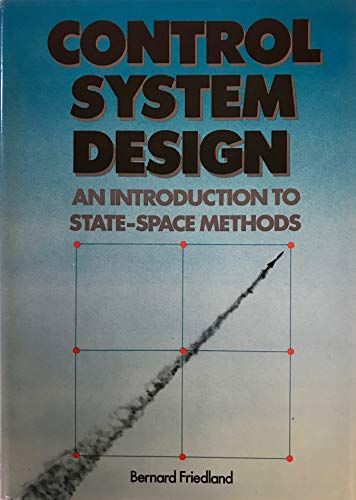 |
| Book Title | Control System Design: An Introduction
to State-Space Methods | | Author | Friedland, Bernard |
| Date | 1986 |
| Grades | 11-20 |
| Keywords | SYMBOLIC MATH
CONTROL THEORY |
|
| Notes |
Perhaps the most successful application of linear systems theory is in orbital
dynamics which got us to the moon. This text clearly introduces the concepts,
and also shows how to use flow diagrams to describe control systems. |
|
85.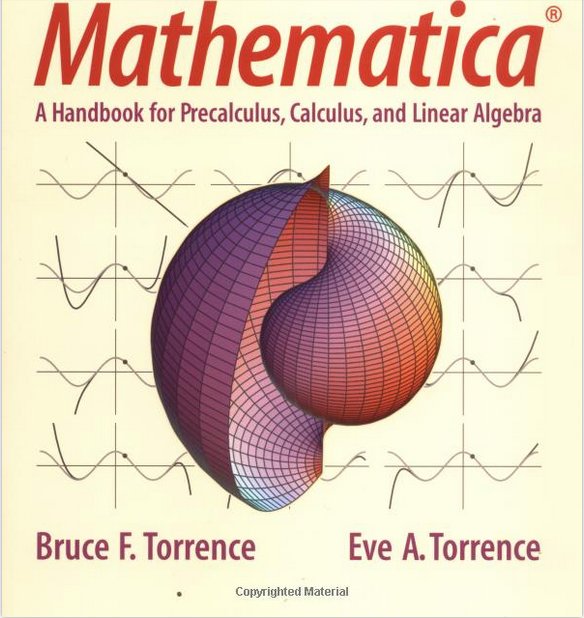 |
| Book Title | Mathematica: A Handbook for Precalculus, Calculus and Linear Algebra | | Author | Torrence, Eve |
| Date | 2009 |
| Grades | 13-20 |
| Keywords | SYMBOLIC MATH
DIFFERENTIAL EQUATIONS
LINEAR SYSTEMS |
|
| Notes | Instructions on how to use the Mathematica package to model linear systems.
[I have not finished this book.] |
|
86. |
| Software Title | Wolfram Mathematica | | From | |
| Grades | 13-20 |
| Keywords | SYMBOLIC SOLVER |
|
| Notes | Powerful but pricey package. Look for educational discounts.
|
|
|
|
| | | |
|
special seminar: the roots of cybernetics and systems theory (one semester)
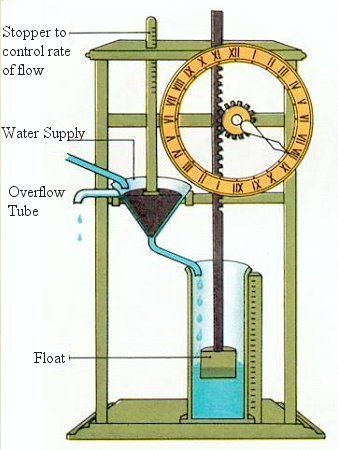 | |
I came at cybernetics from the historical direction, so this material is beloved to me, but it doesn't fit into the above curriculum very well, so I've assembled it here.
Again there are too many books. The ones with a keyword HISTORY are after-the-fact accounts. The last 6 books are original works of relevance. Have the students divide up the books and give book reports to the class. | |
|
87. |
| Paper Title | Feedback Control: An Invisible Thread in the History of Technology | | Author | Bernstein, Dennis S. |
| Date | 2002 |
| Grades | 9-20 |
| Keywords | FEEDBACK HISTORY |
|
| Notes | An informative essay.
|
|
88. |
| Paper Title | An historical essay on cybernetics | | Author | Asaro, Peter |
| Date | 2021? |
| Grades | 11-20 |
| Keywords | CYBERNETICS HISTORY |
|
| Notes |
An informative essay.
|
|
89.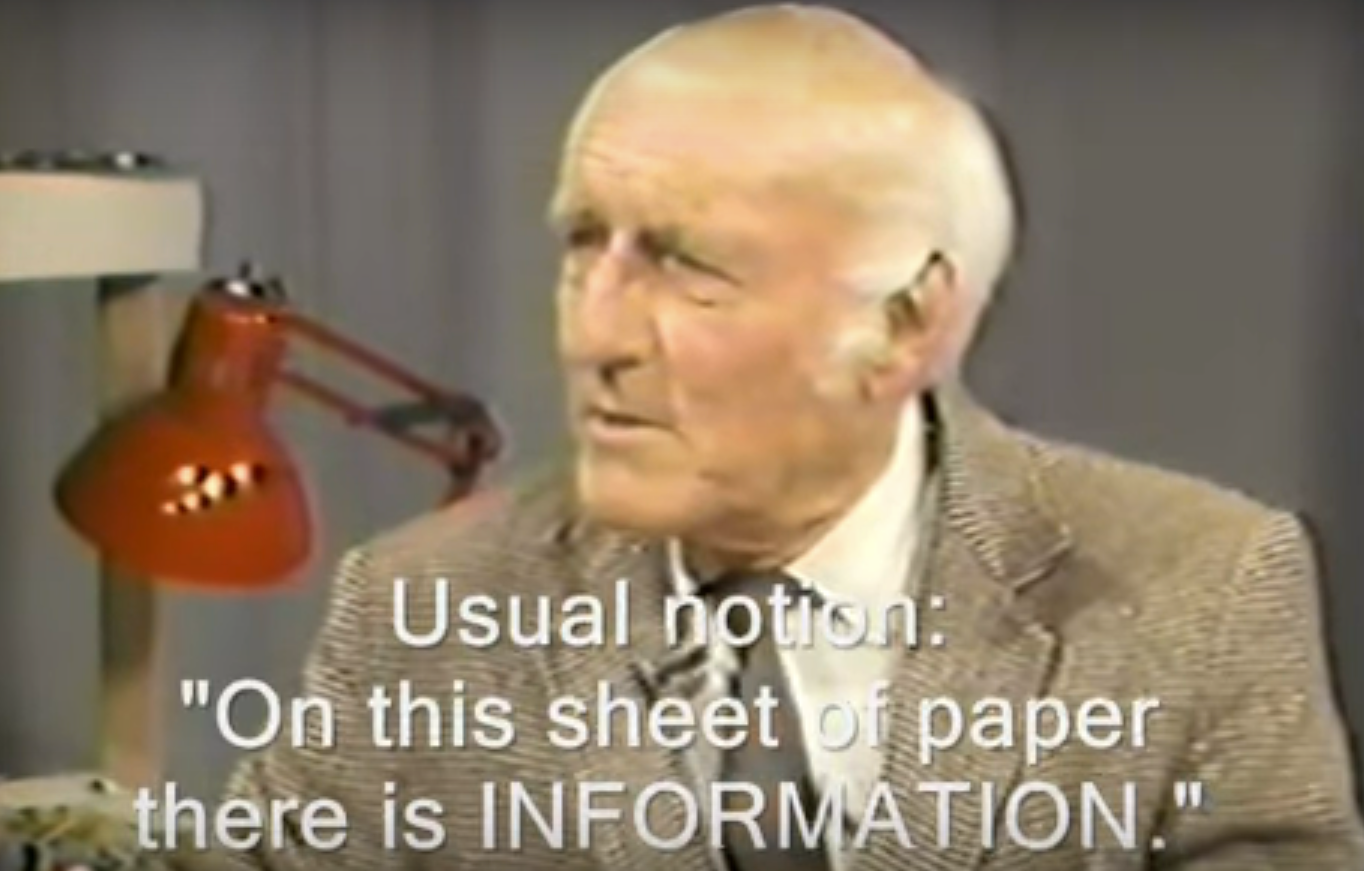 |
| Video Title | High Tech Heroes, #10, part 1: Heinz von Foerster and Cybernetics | | Contributors | atwaterpub |
| Date | 2016 |
| Grades | 09-20 |
| Keywords | HISTORY OF CYBERNETICS |
|
| Notes | Von Foerster is always a joy to listen to. He was one of the pioneers at the Macy meetings.
|
|
90.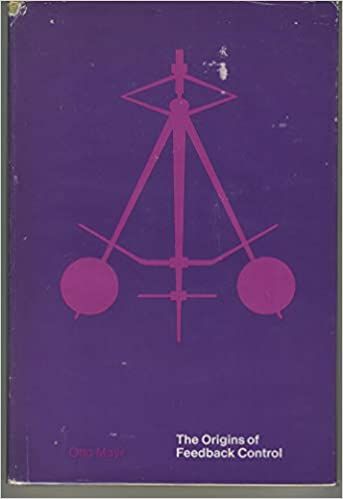 |
| Book Title | The Origins of Feedback Control | | Author | Mayr, Otto |
| Date | 1971 |
| Grades | 7-16 |
| Keywords | FEEDBACK HISTORY |
|
| Notes | A detailed examination of physical methods for feedback throughout the history of civilization. |
|
91.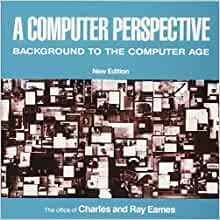 |
| Book Title | A Computer Perspective: Background to the Computer Age | | Author | Eames, Charles & Ray (Office of) |
| Date | 1973 |
| Grades | 7-16 |
| Keywords | COMPUTING DEVICES HISTORY |
|
| Notes | The fascinating evolution of calculating machinery. The story of L. F. Richardson is amazing. |
|
92.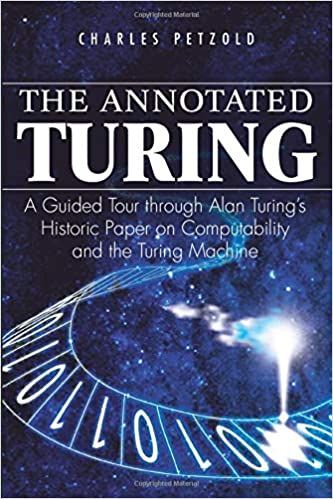 |
| Book Title | The Annotated Turing: A Guided Tour Through Alan Turing's Historic Paper on Computability and the Turing Machine | | Author | Petzold, Charles |
| Date | 2008 |
| Grades | 11-20 |
| Keywords | COMPUTABILITY HISTORY |
|
| Notes | A journey through the work of the pioneer who invented computing and defined computability (with Church) before there were any computers; he may have also built the first one. |
|
93.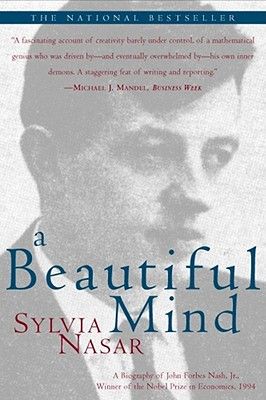 |
| Book Title | A Beautiful Mind | | Author | Nasar, Sylvia |
| Date | 1997 |
| Grades | 13-16 |
| Keywords | GAME THEORY HISTORY |
|
| Notes | This book not only does a great job of describing Nash's career and contributions to game theory, it also supplies a lot of context about what else was going on in math. Trigger warning: he had some hateful views that would not fly in today's society. |
|
94.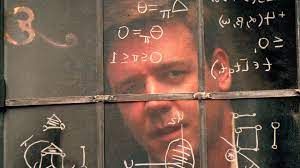 |
| Movie Title | A Beautiful Mind |
| Date | 2001 |
| Grades | 13-16 |
| Keywords | GAME THEORY< HISTORY/TD> |
|
| Notes | The movie version is well made, lighter on math but also light on the hate. |
|
95. |
| Book Title | The Cybernetics Group | | Author | Heims, Steve Joshua |
| Date | 1991 |
| Grades | 11-20 |
| Keywords | HISTORY OF CYBERNETICS |
|
| Notes | A pedestrian but useful account of the meetings in the late 1940s where cybernetics was born. |
|
96.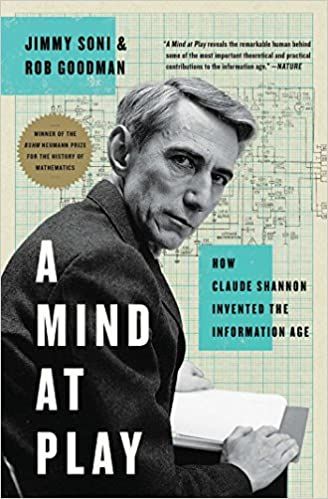 |
| Book Title | A Mind at Play: How Claude Shannon Invented the Information Age | | Author | Soni & Goodman |
| Date | 2018 |
| Grades | 11-20 |
| Keywords | INFORMATION THEORY HISTORY |
|
| Notes | An uplifting account of Shannon's career.
[I have not read this book.] |
|
97.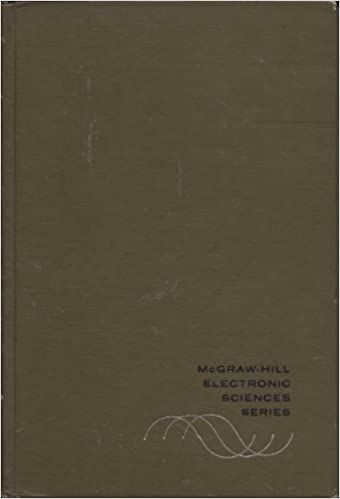 |
| Book Title | Information Theory and Coding | | Author | Abramson, Norman |
| Date | 1963 |
| Grades | 13-20 |
| Keywords | INFORMATION THEORY |
|
| Notes | A very serviceable text on Shannon's information theory. |
|
98.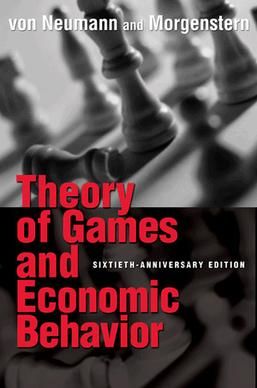 |
| Book Title | Theory of Games and Economic Behavior | | Author | von Neumann, John and Morgenstern, Oskar |
| Date | 1944 |
| Grades | 7-16 |
| Keywords | SYMBOLIC MATH
GAME THEORY |
|
| Notes | The book that created the field of game theory. |
|
99. |
| Book Title | Design for a Brain | | Author | Ashby, Ross |
| Date | 1952 |
| Grades | 8-29 |
| Keywords | CYBERNETICS, MACHINE LEARNING |
|
| Notes | Ashby is always a delight. Here he is grappling with early concepts in machine learning. |
|
100.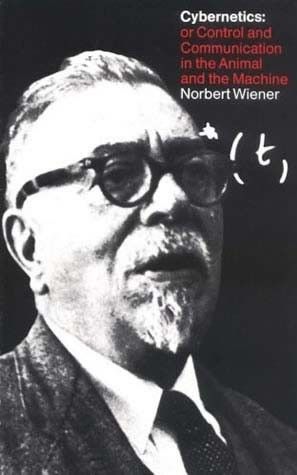 |
| Book Title | Cybernetics [Second Edition] | | Author | Wiener, Norbert |
| Date | 1961 |
| Grades | 13-20 |
| Keywords | CYBERNETICS, FUNCTION PREDICTION |
|
| Notes | Wiener's manifesto on the new science of cybernetics is important but mostly impenetrable. If you manage to figure it out please explain it to me. |
|
101.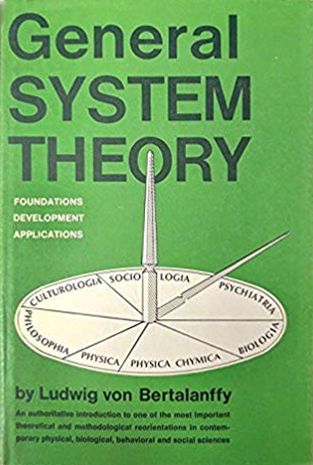 |
| Book Title | General System Theory | | Author | von Bertalanffy, Ludwig |
| Date | 1968 |
| Grades | 11-20 |
| Keywords | SYSTEMS THEORY |
|
| Notes | Working in Germany at the same time Weiner was working in the US, von Bertalanffy laid out a blueprint for systems theory and many of his ideas are still relevant today. |
|
102.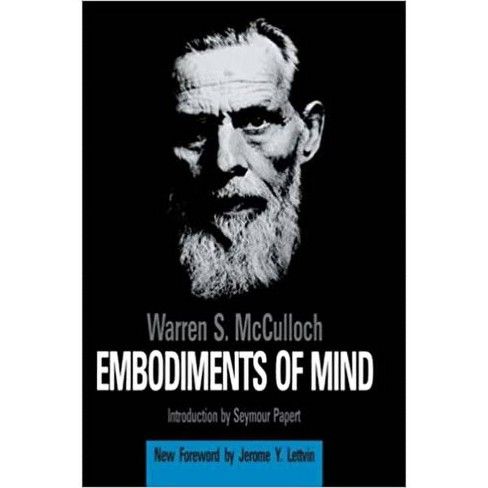 |
| Book Title | Embodiments of Mind | | Author | McCulloch, Warren |
| Date | 1970 |
| Grades | 7-16 |
| Keywords | NEURAL NETS |
|
| Notes | A collection of McCulloch's papers on mostly neural nets. He was Bateson's mentor and the organizer of the Macy meetings where cybernetics was born. |
|
103.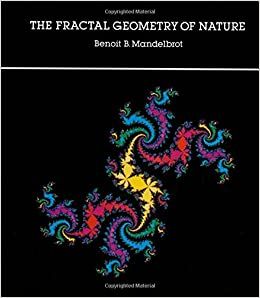 |
| Book Title | Fractal Geometry of Nature | | Author | Mandelbrot, Benoit |
| Date | 1982 |
| Grades | 11-20 |
| Keywords | FRACTALS |
|
| Notes |
Mandelbrot's original manifesto on fractal dimensions, electrical noise, river
flooding levels and the lengths of coastlines. |
|
| | | |
When I showed the 1990 Curriculum for Cybernetics and Systems Theory Version 1.0
to an educator I know, he said "This isn't a lesson plan." Well, version 2.0 isn't a lesson plan either, but it's closer. It's like a plan for a lesson plan. Unfortunately to complete the plan one must learn all of the subjects listed above, and read and become familiar with all the texts. But I wanted to capture my current thoughts on the subject. Expect more improvements.
Feedback requested as always.
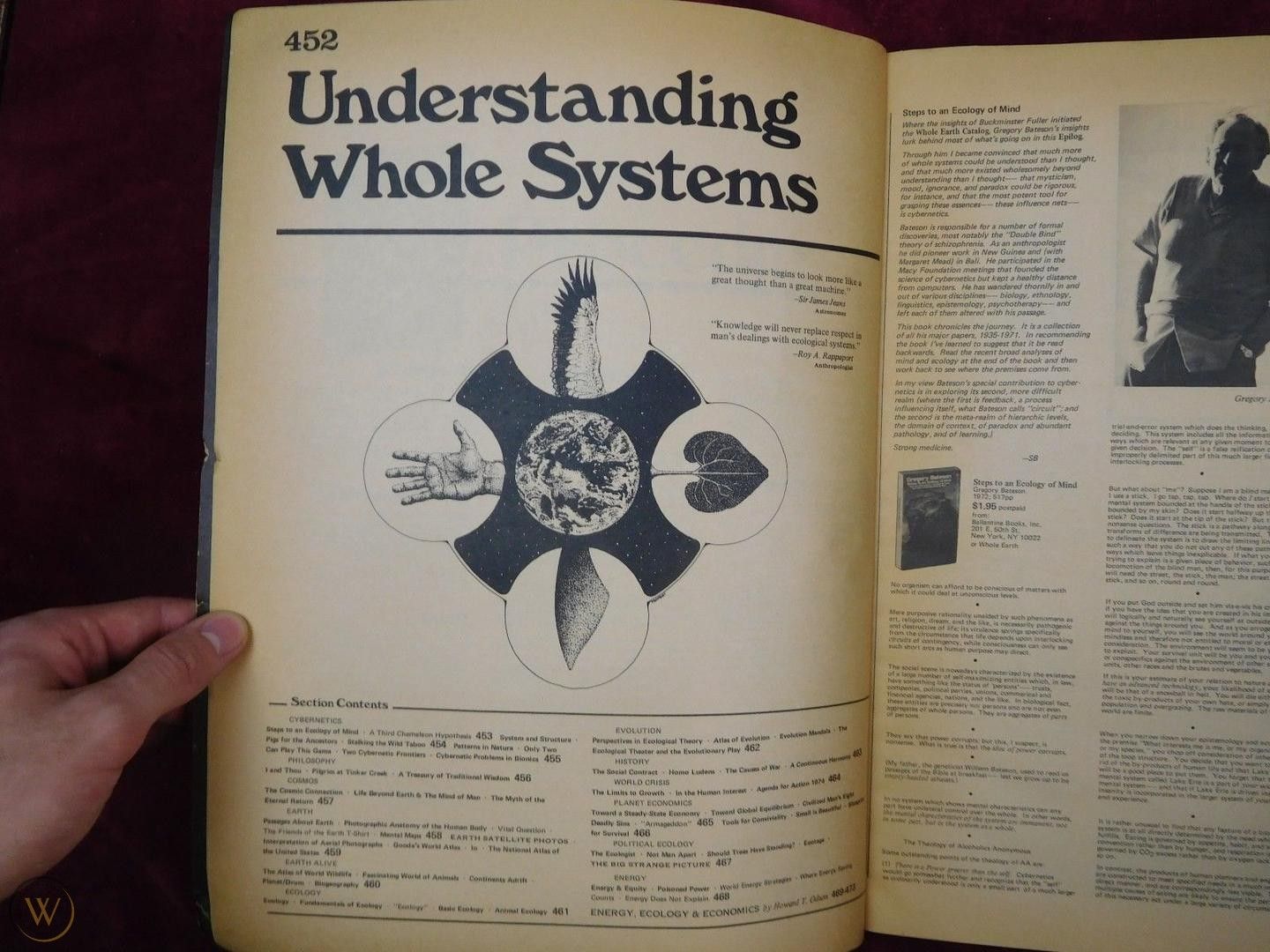


















































.jpg)





















































